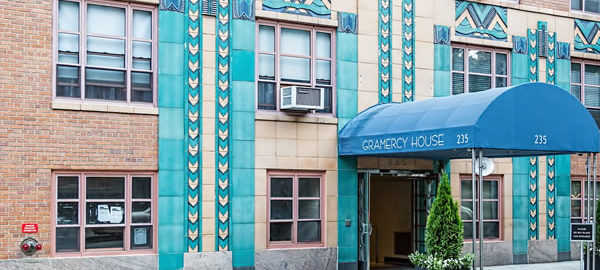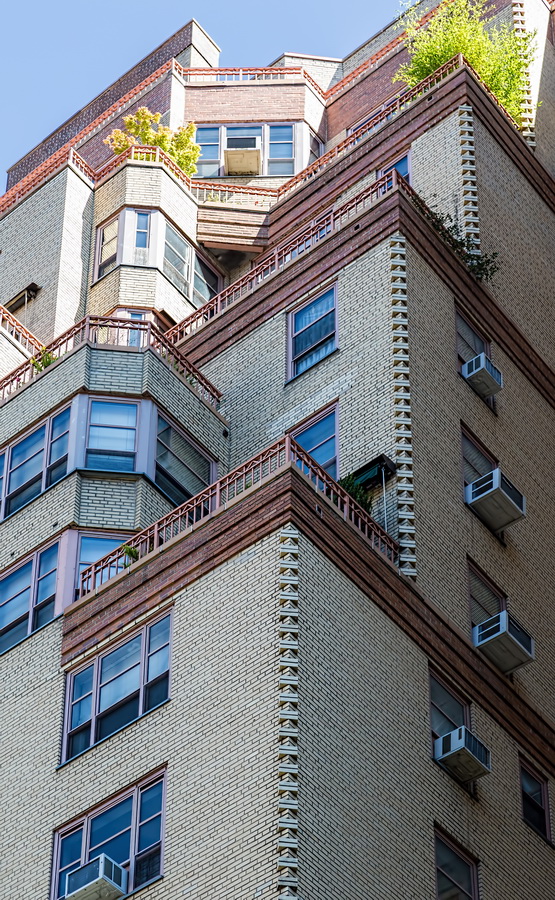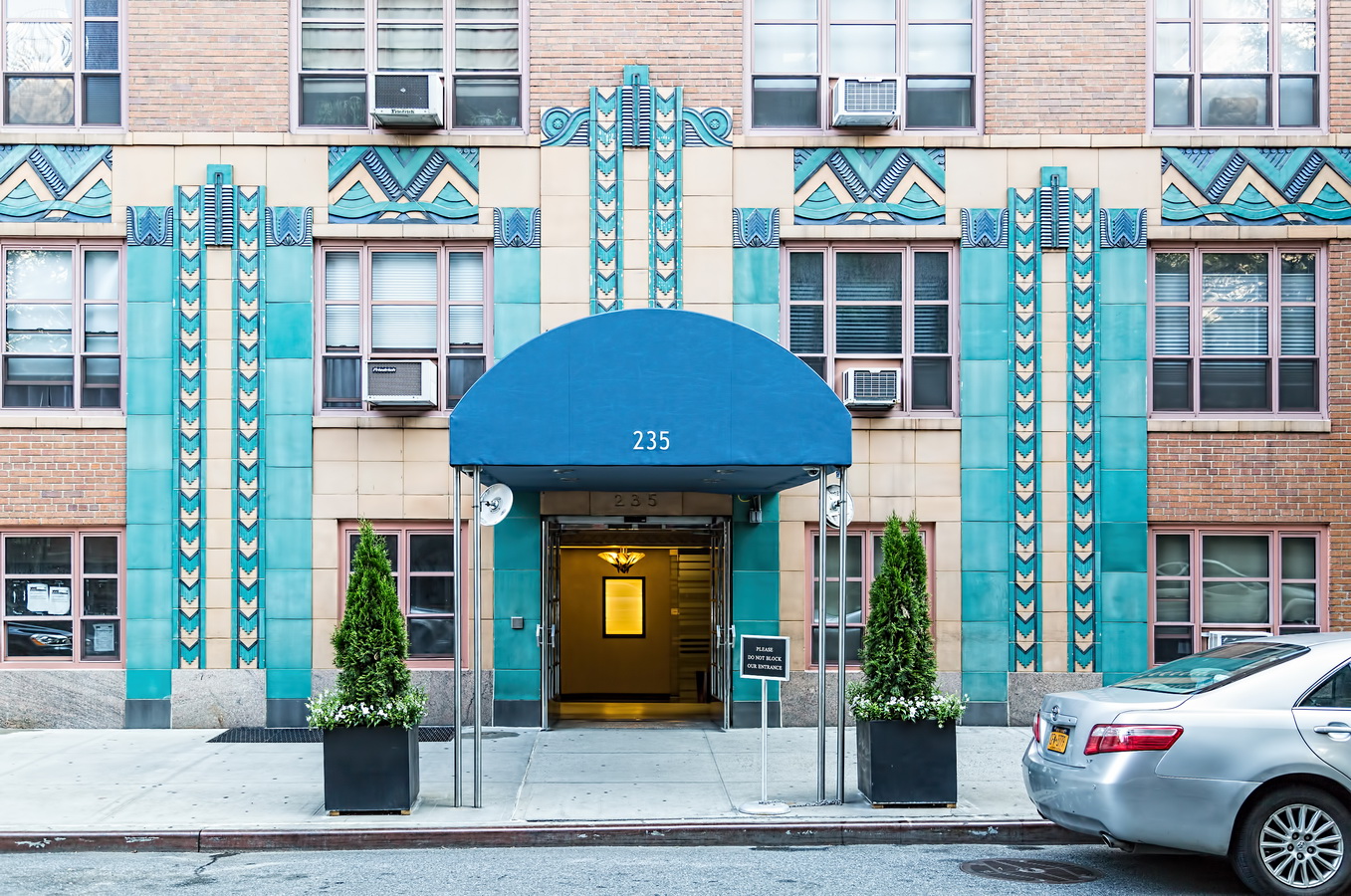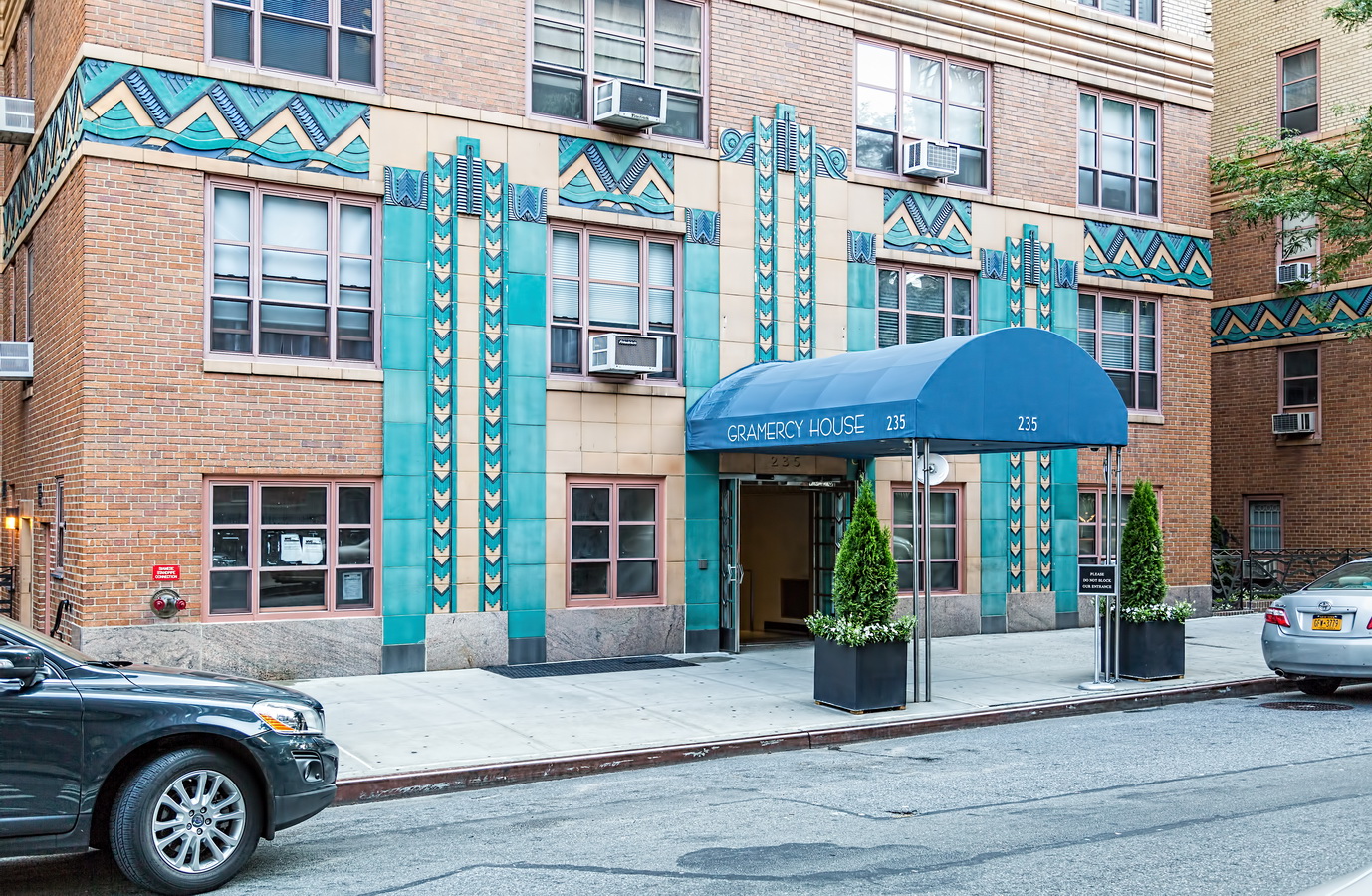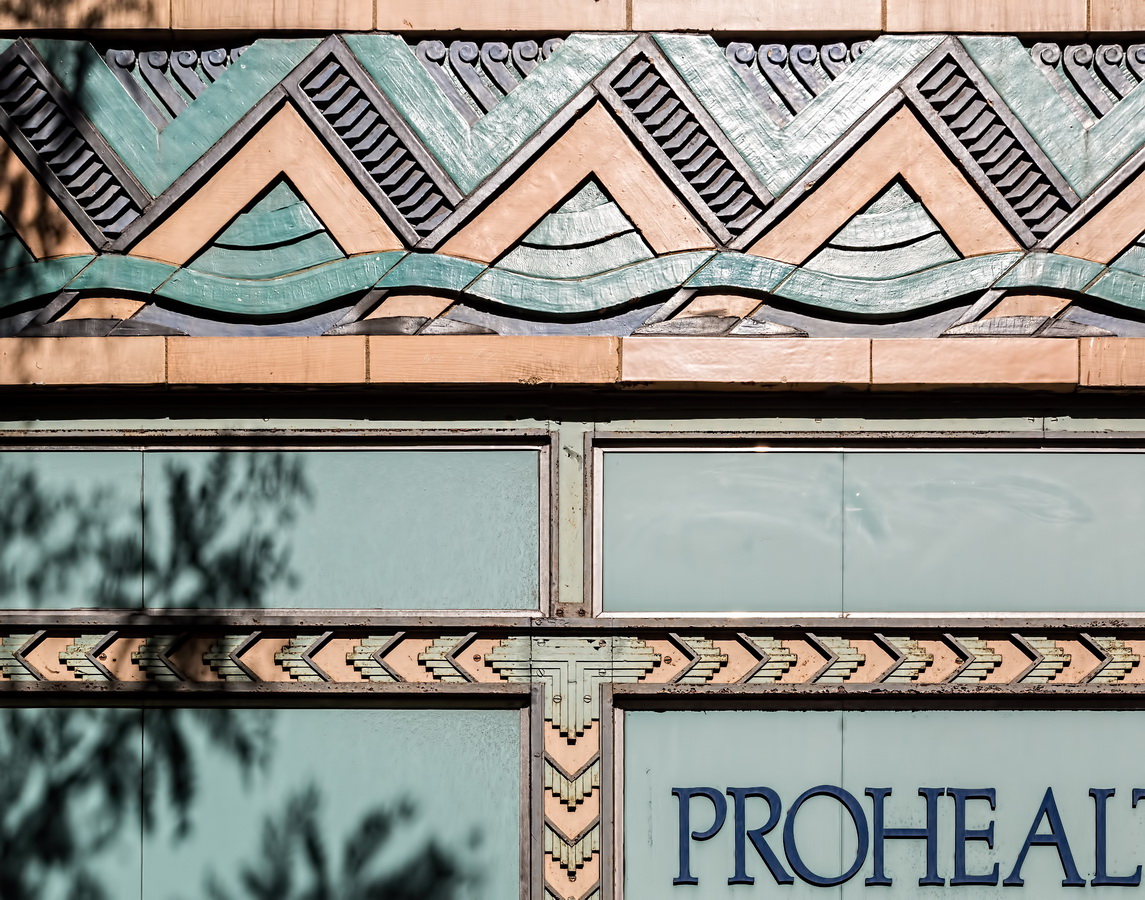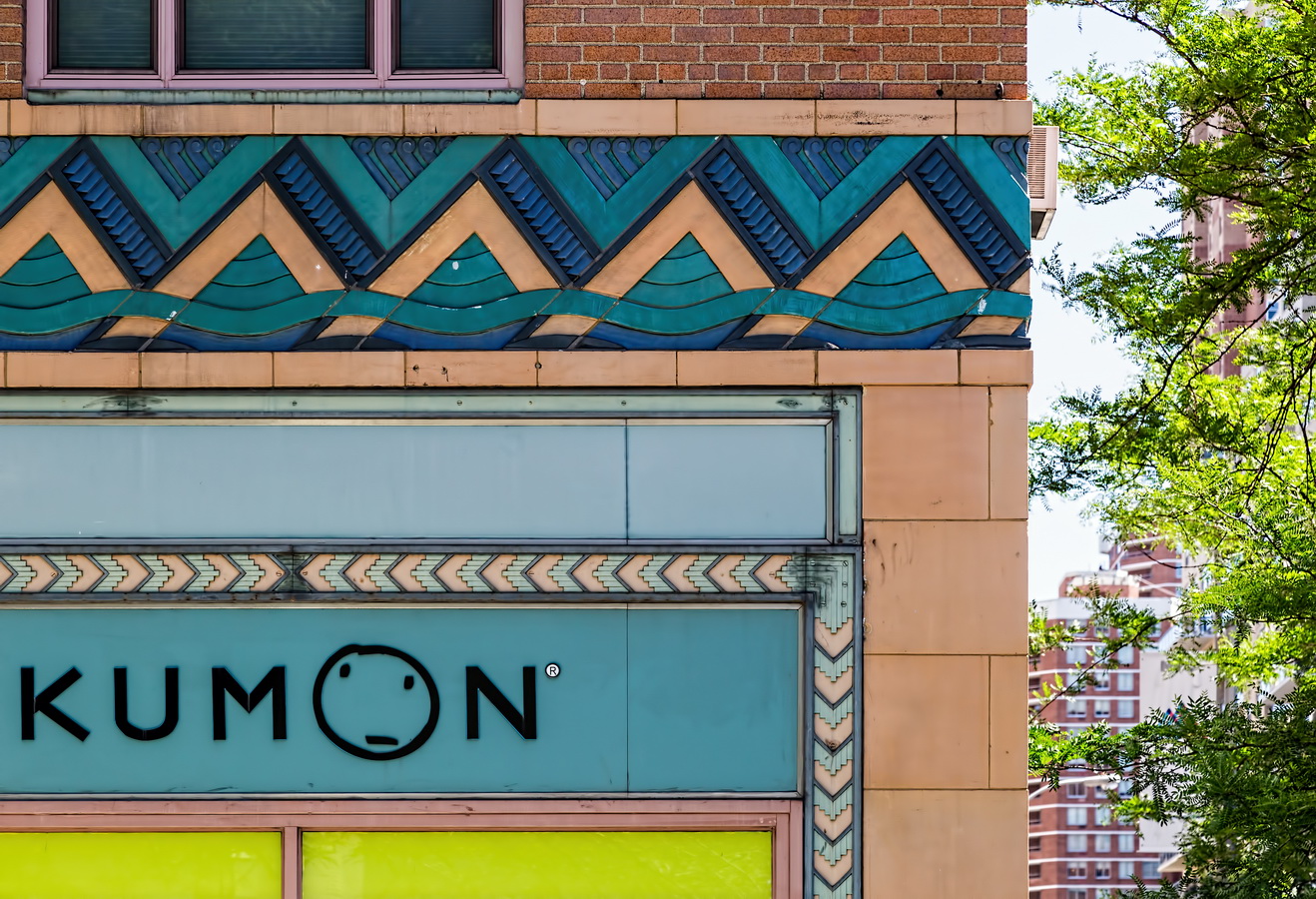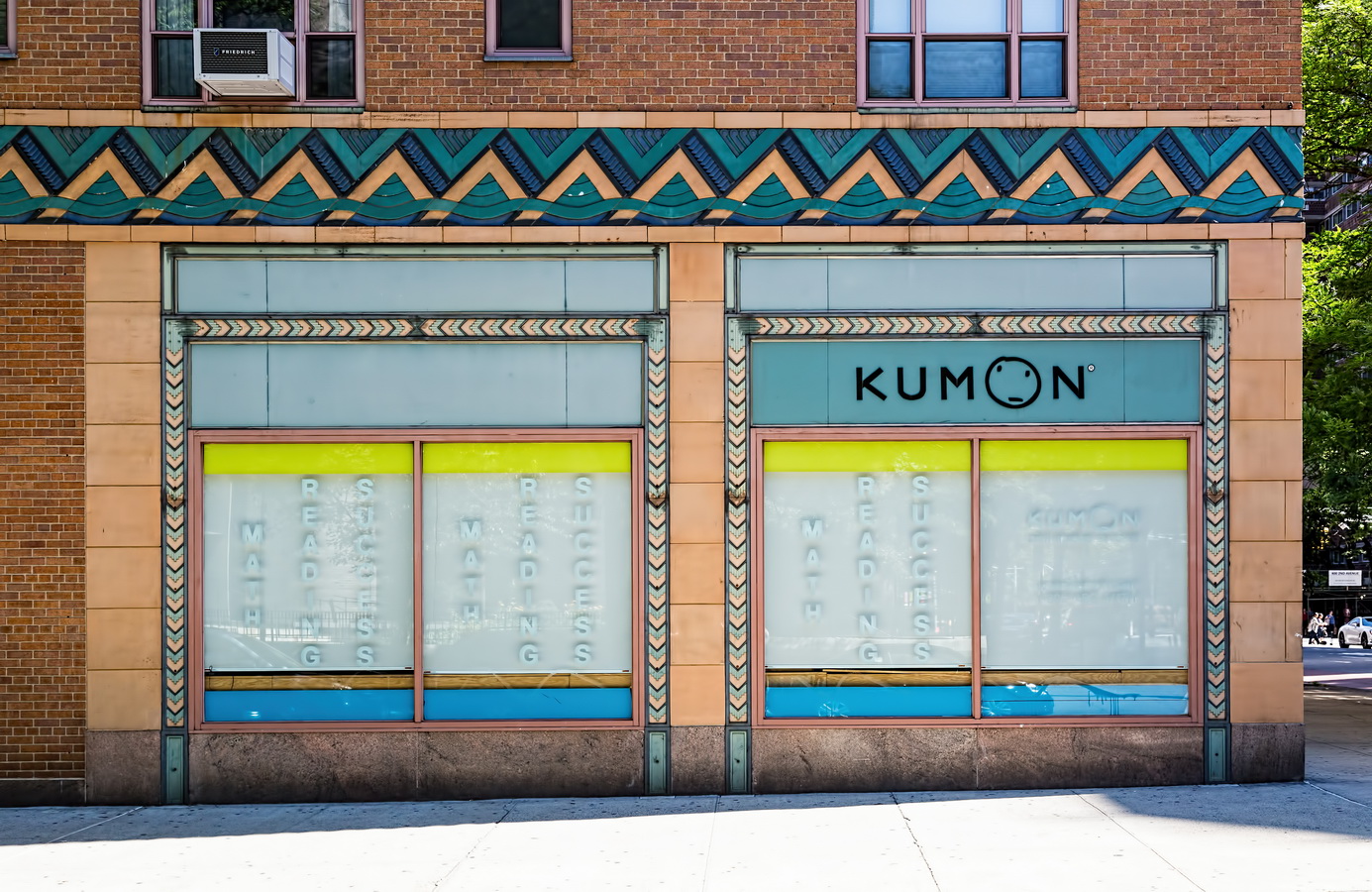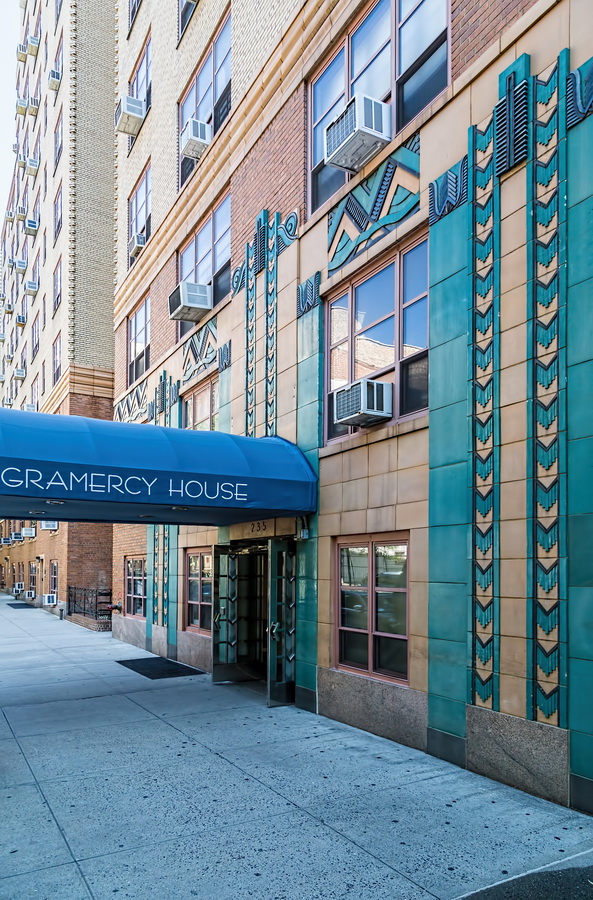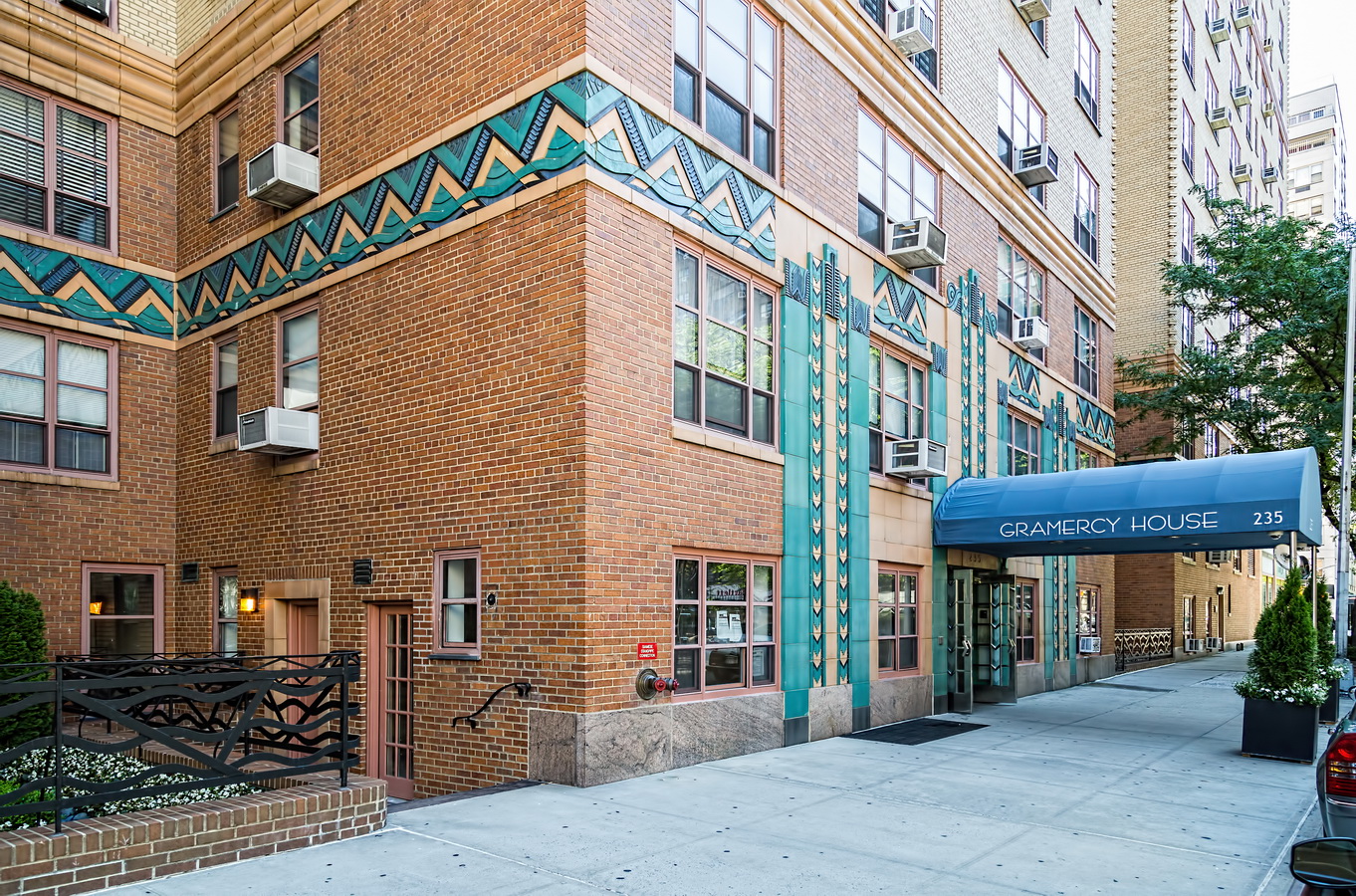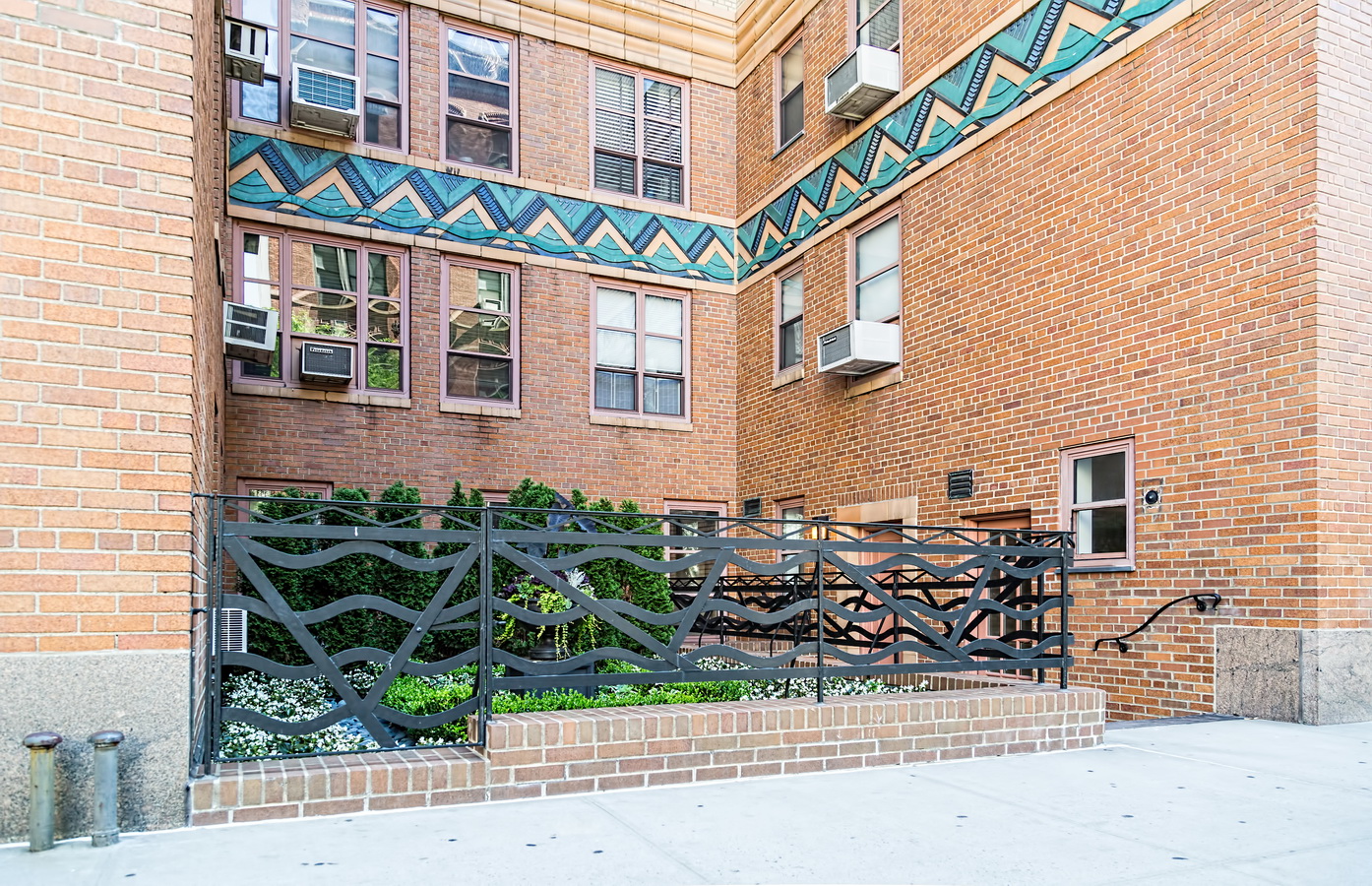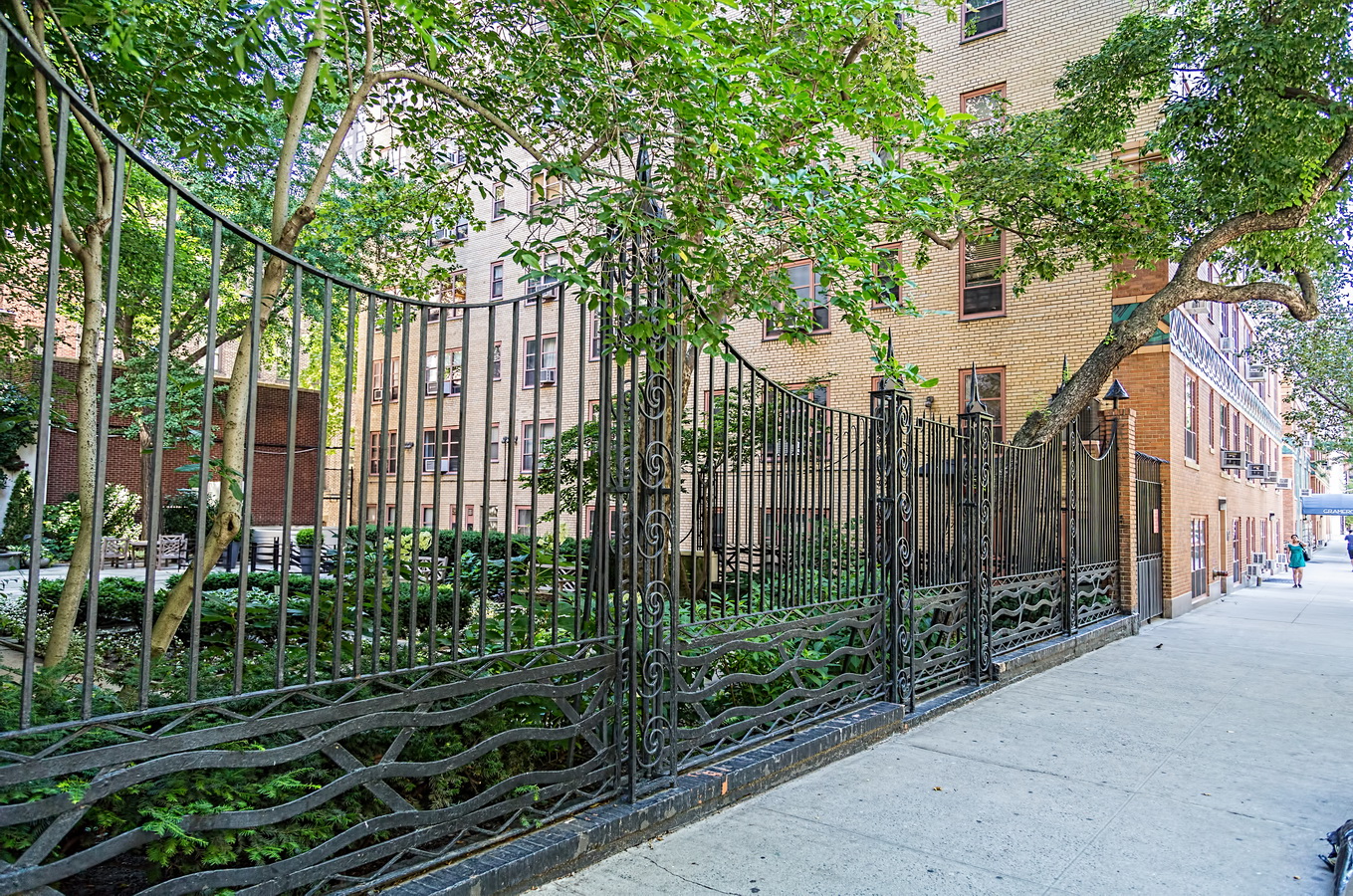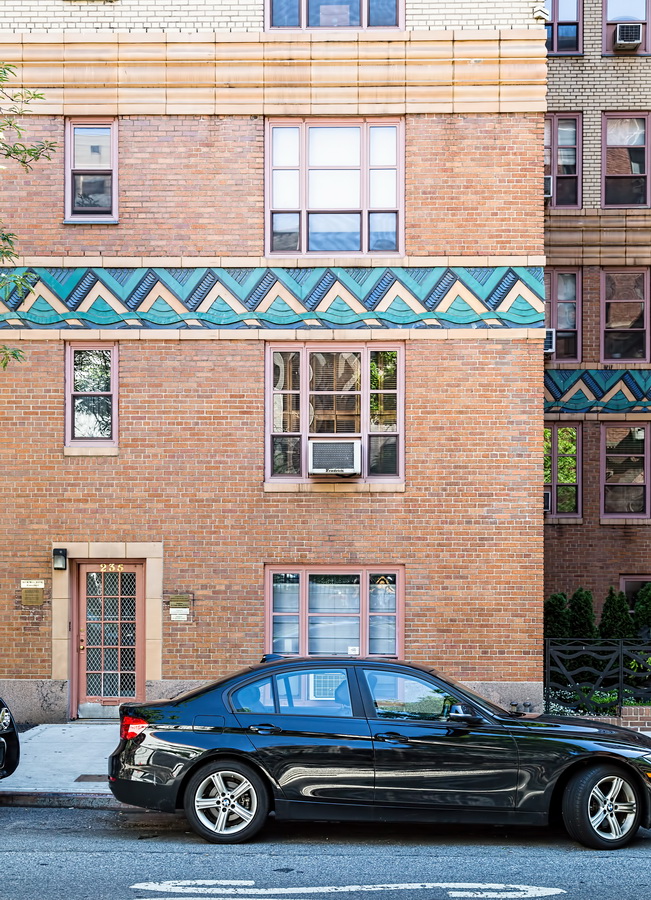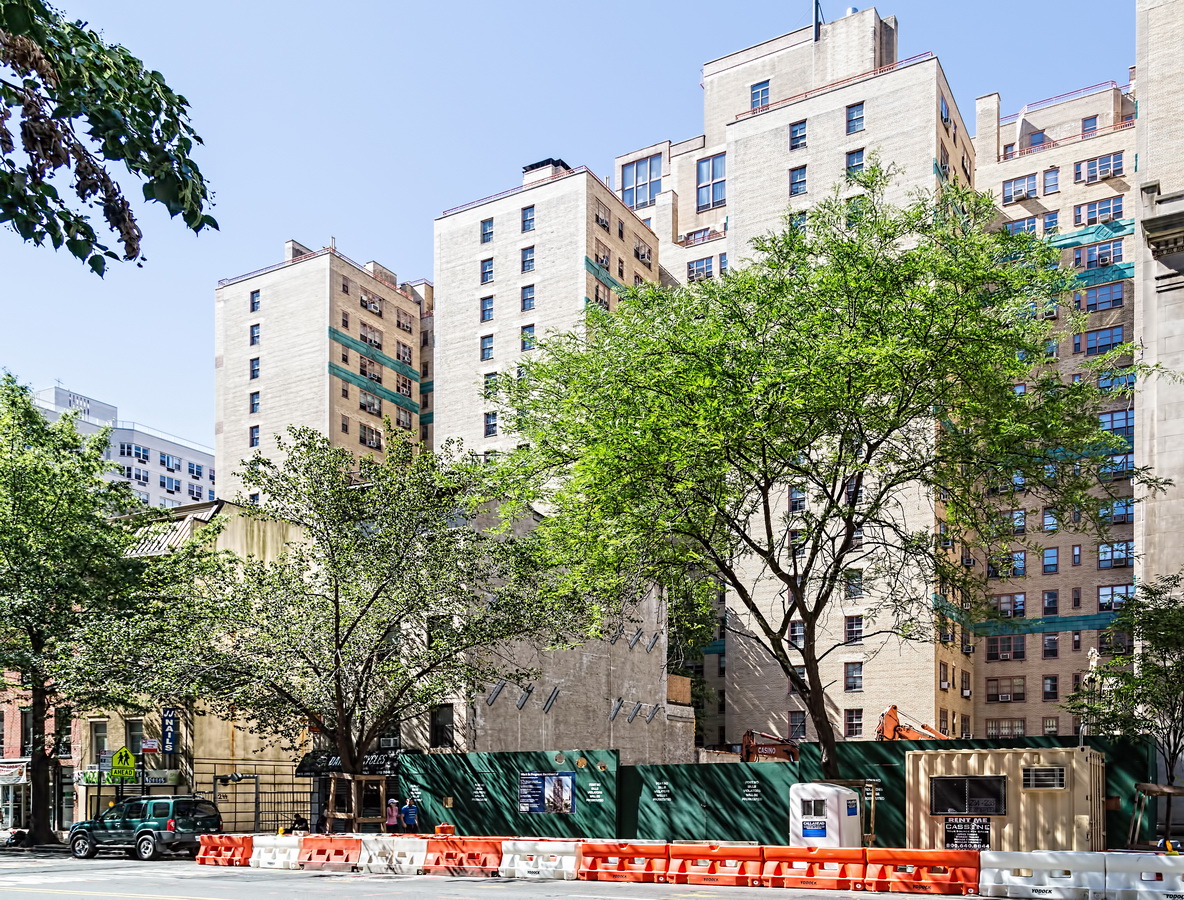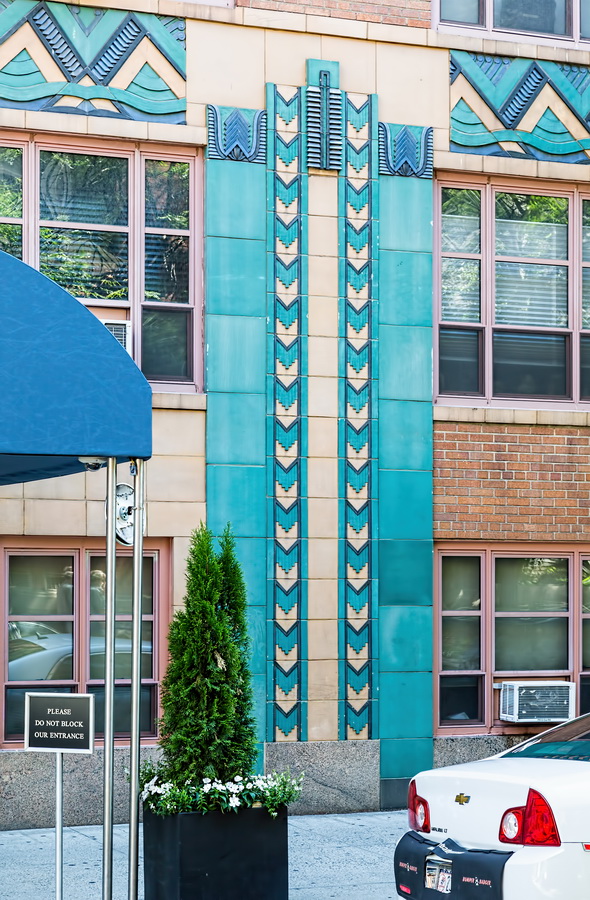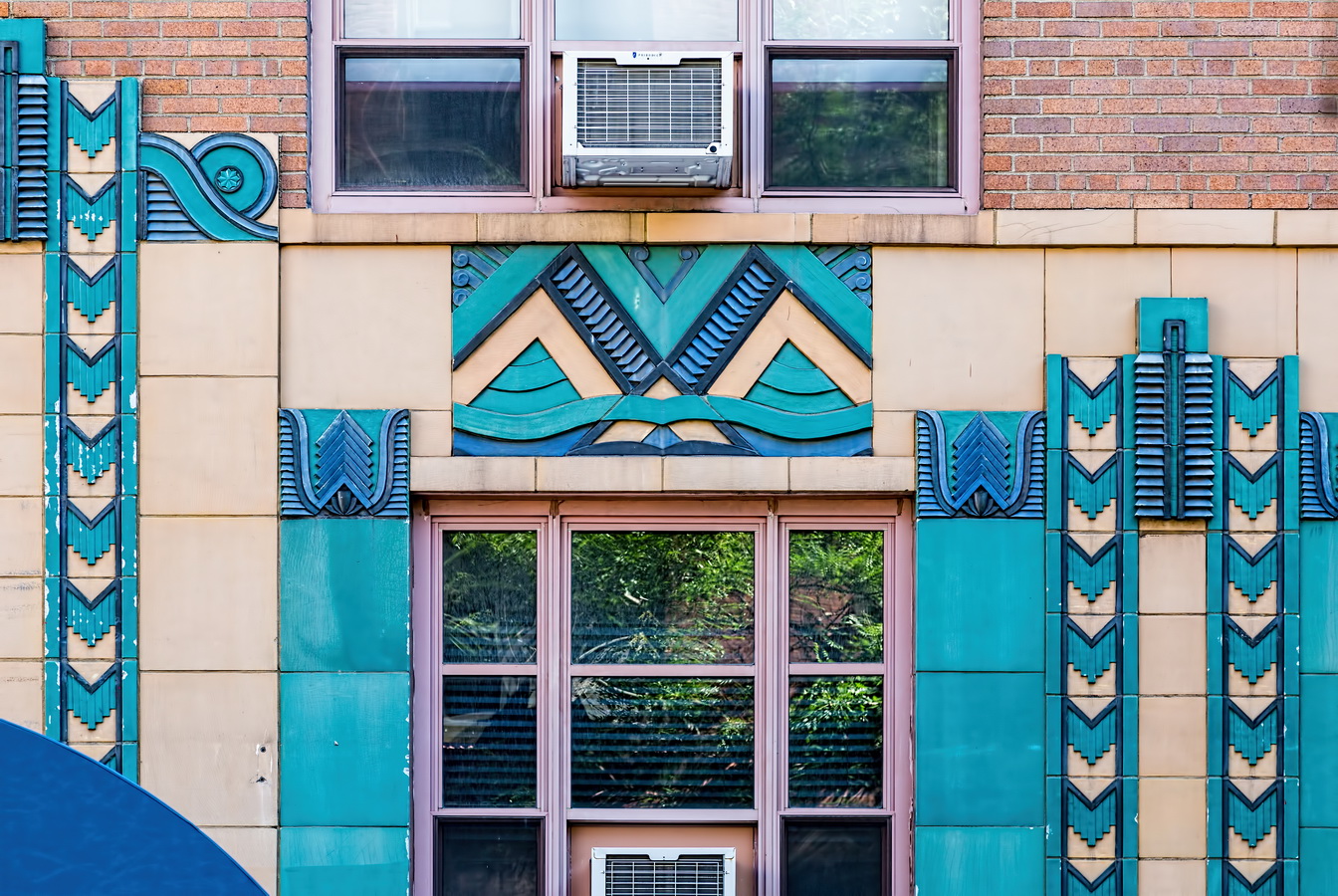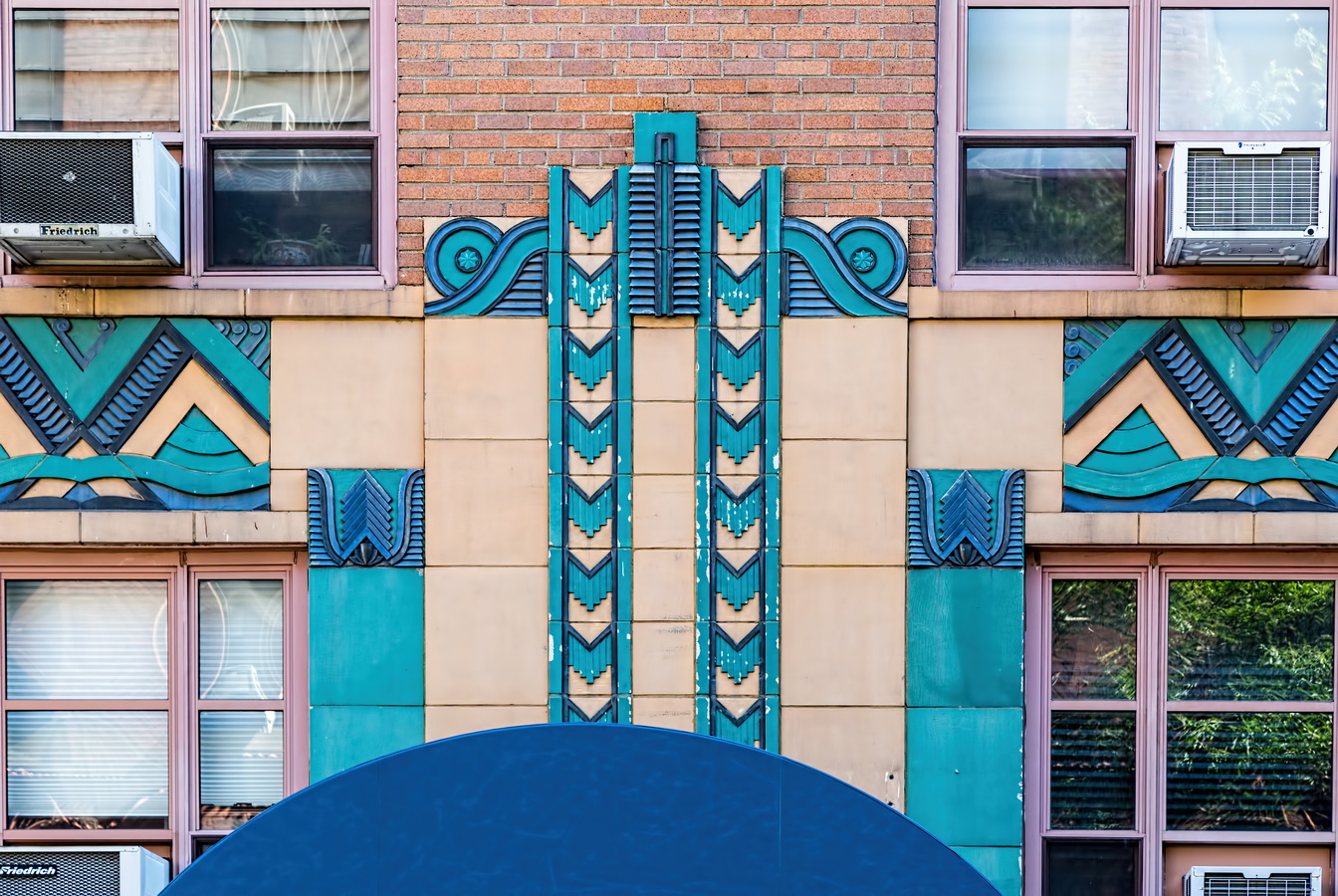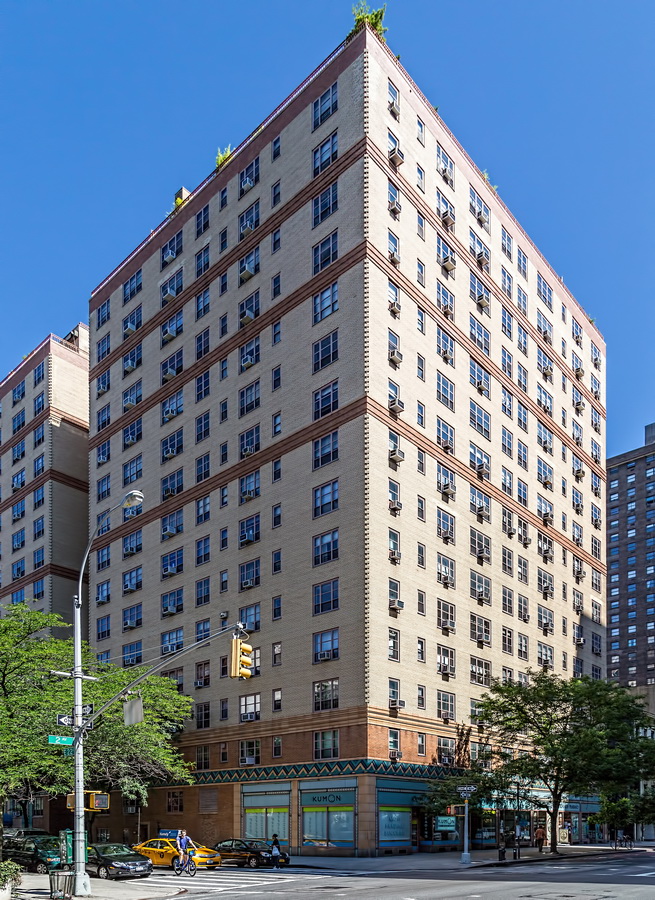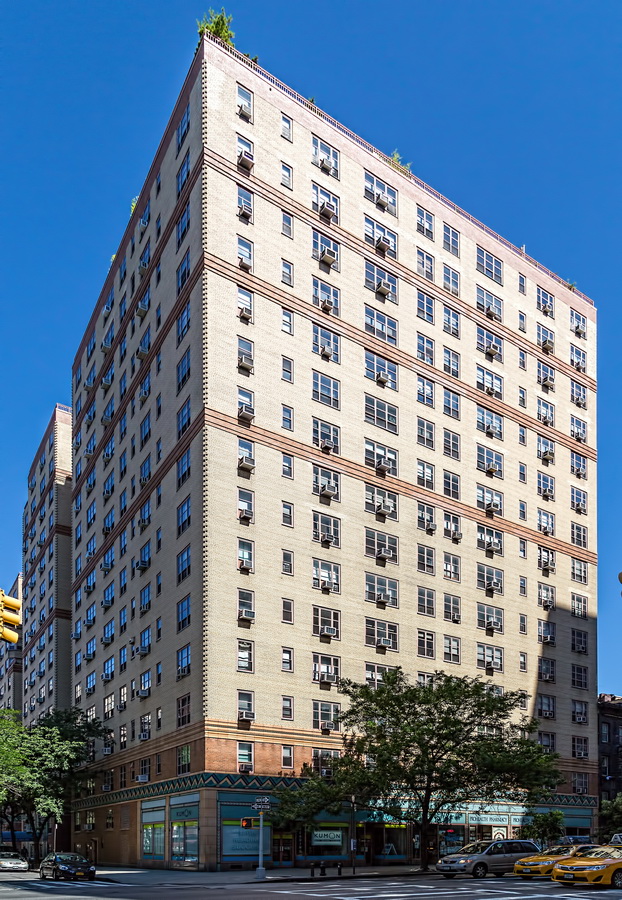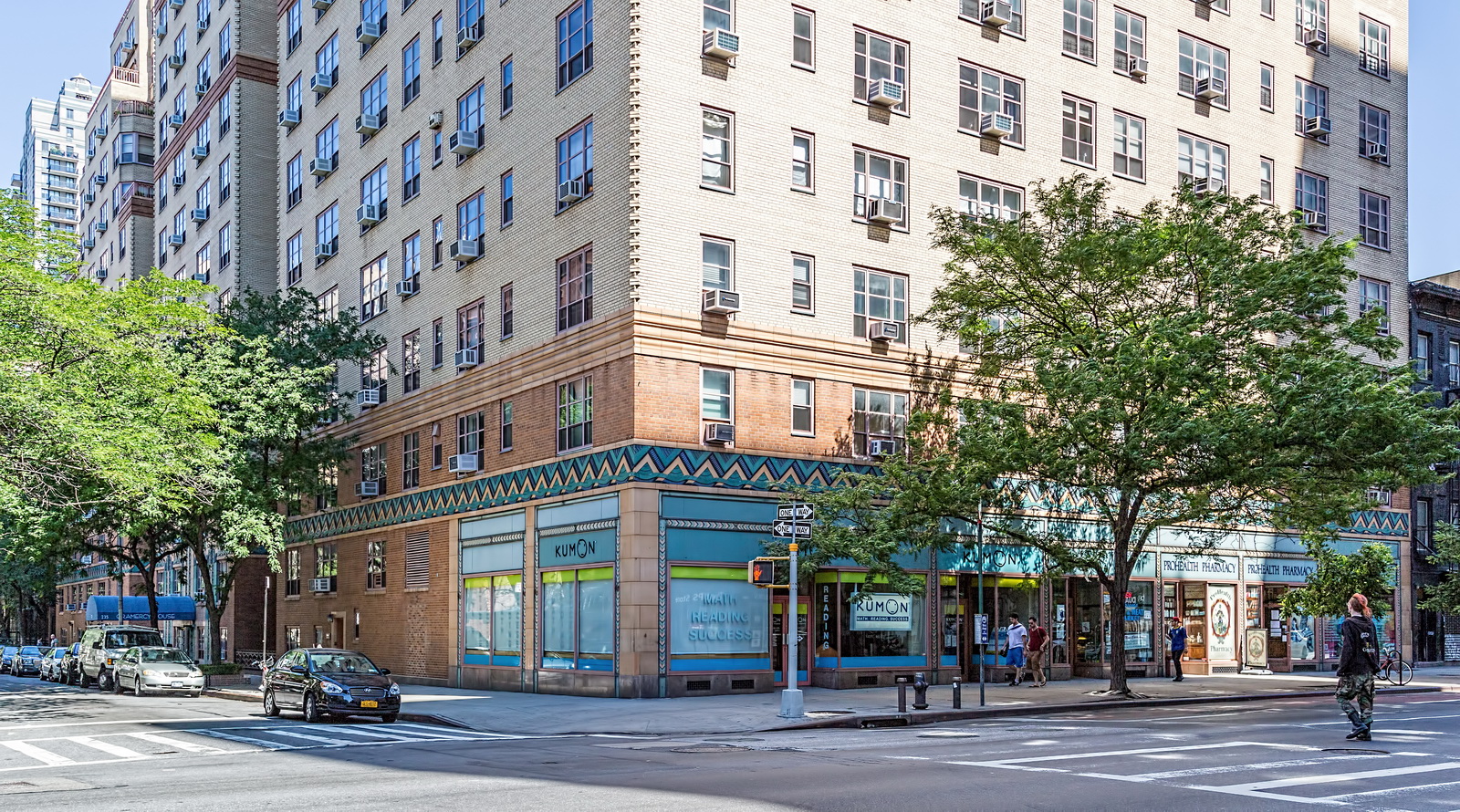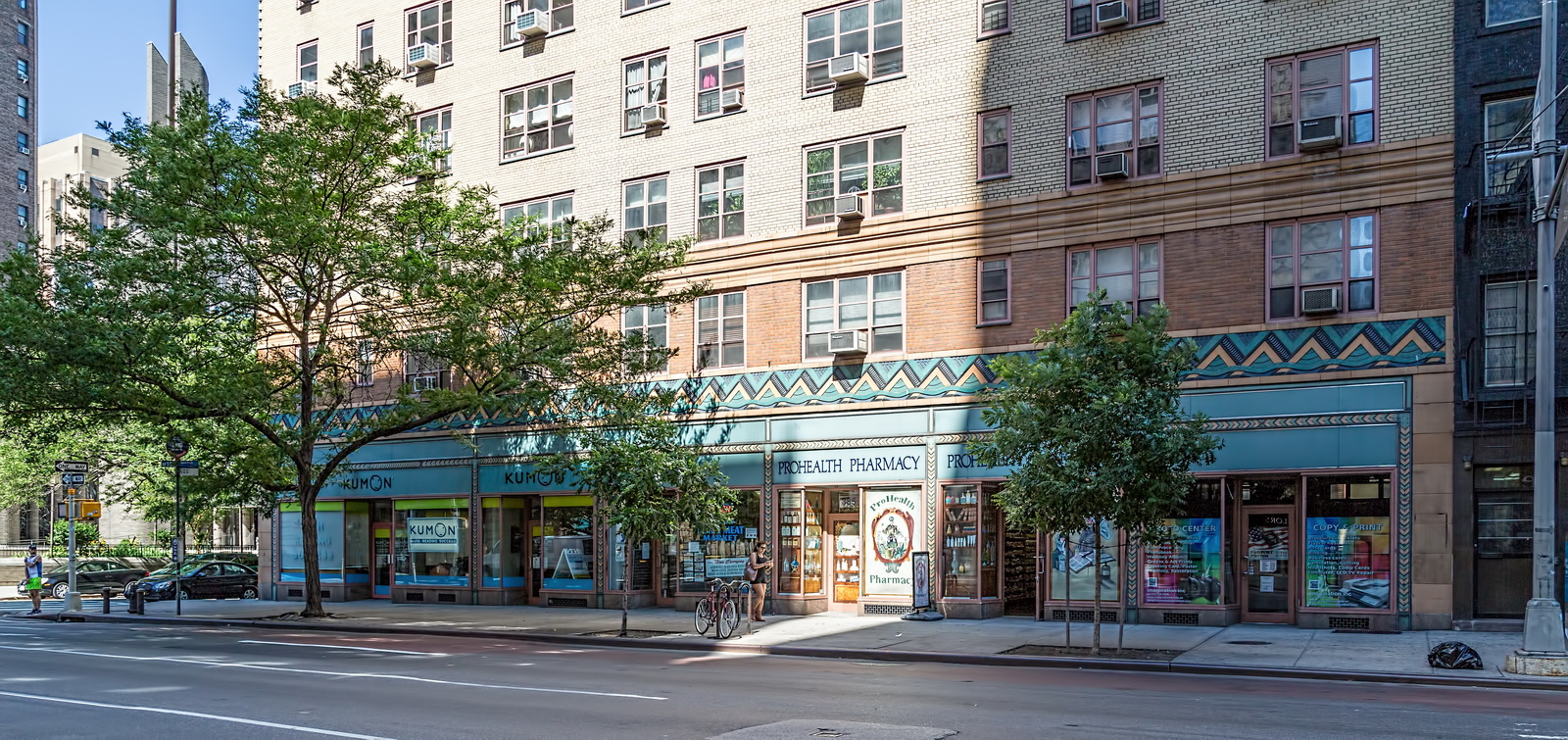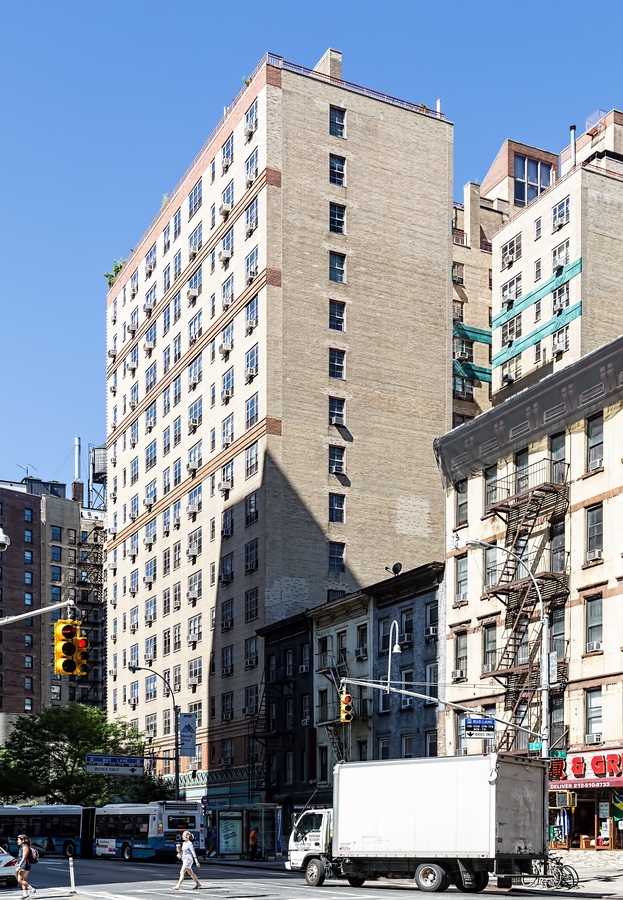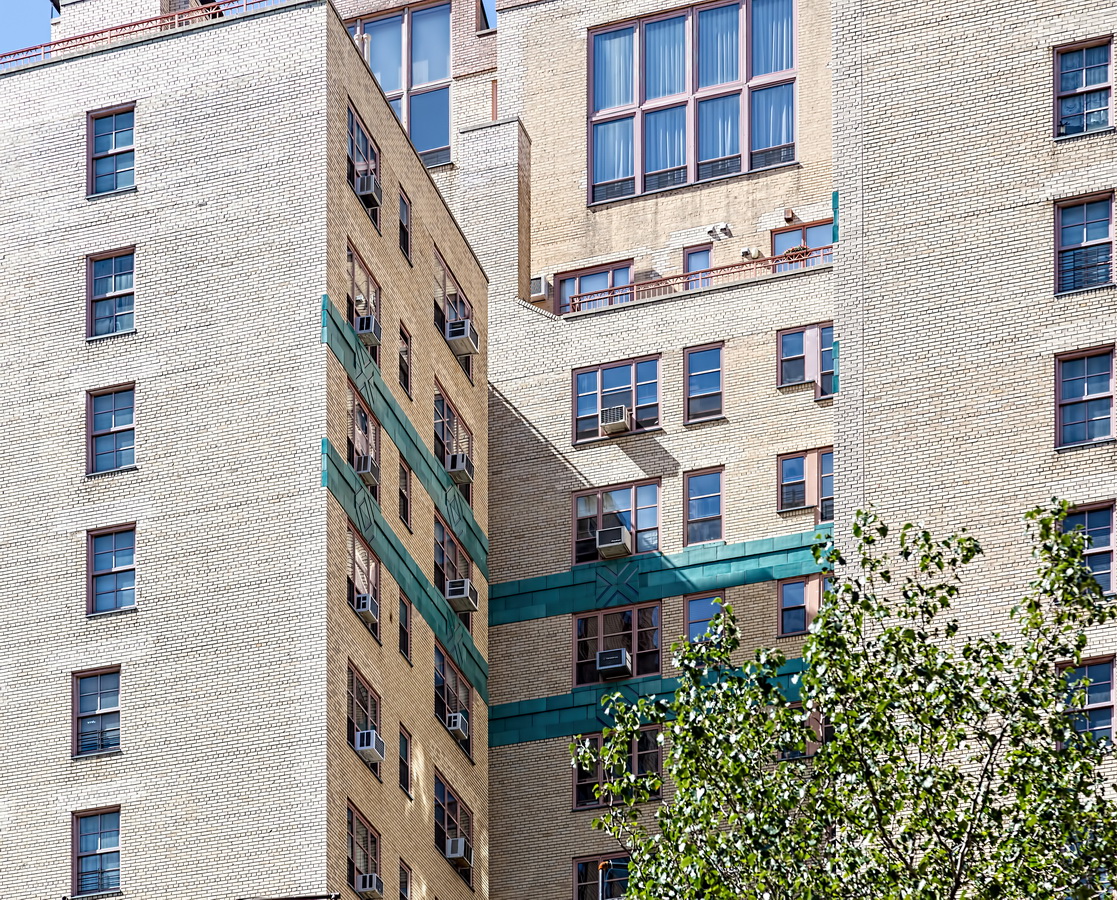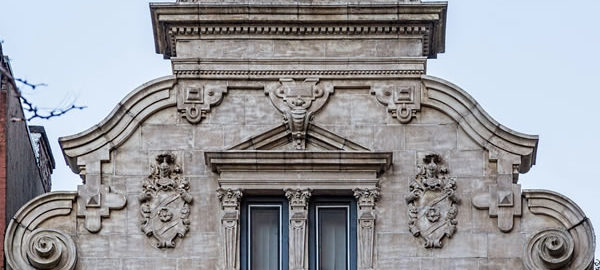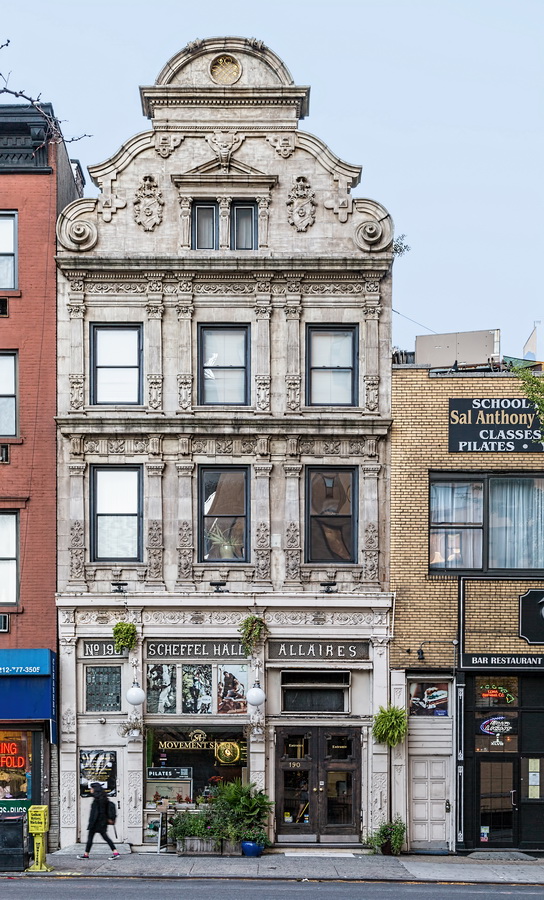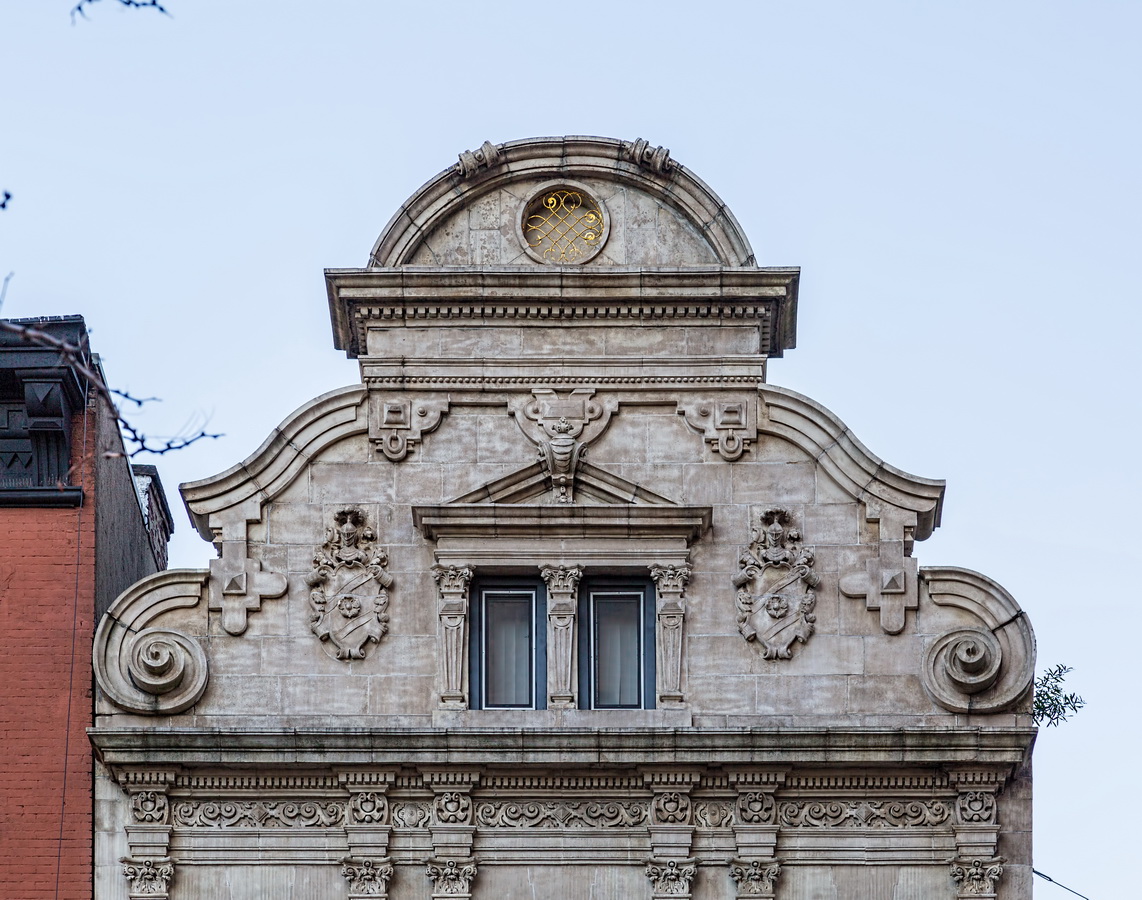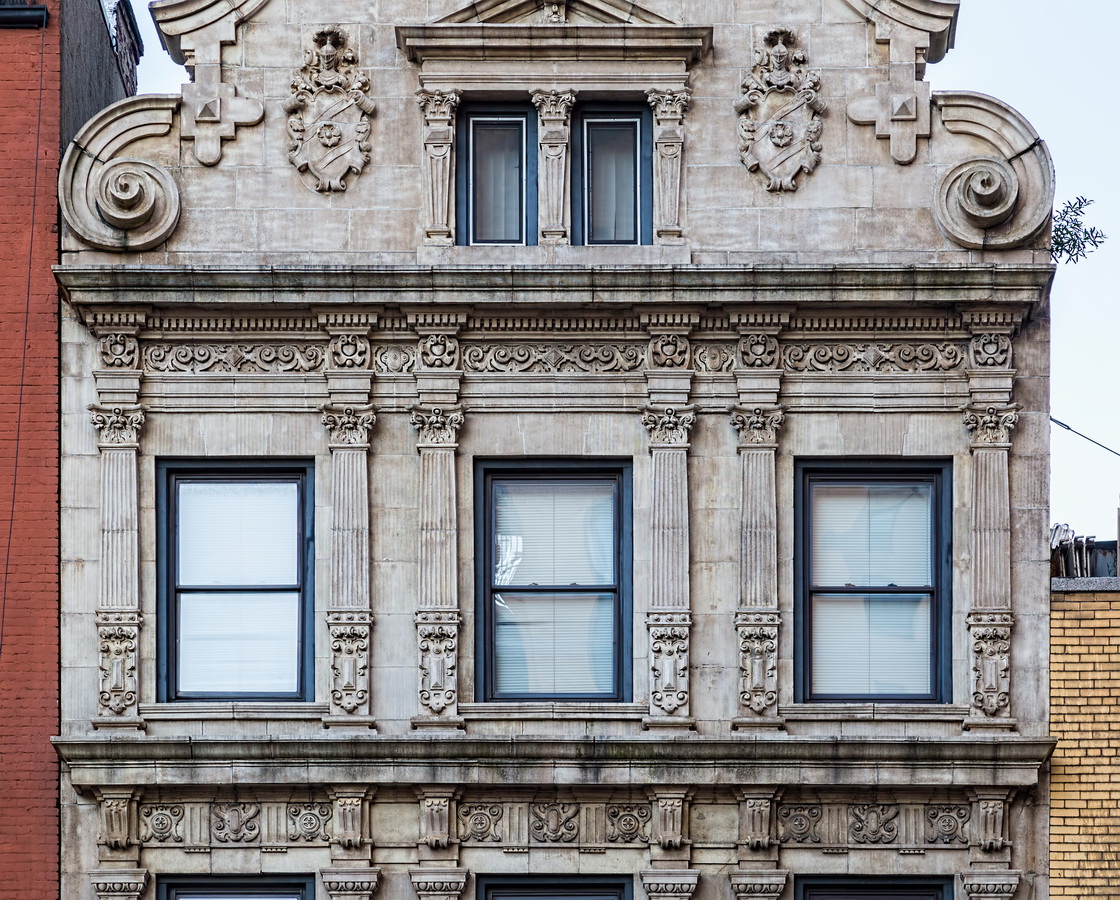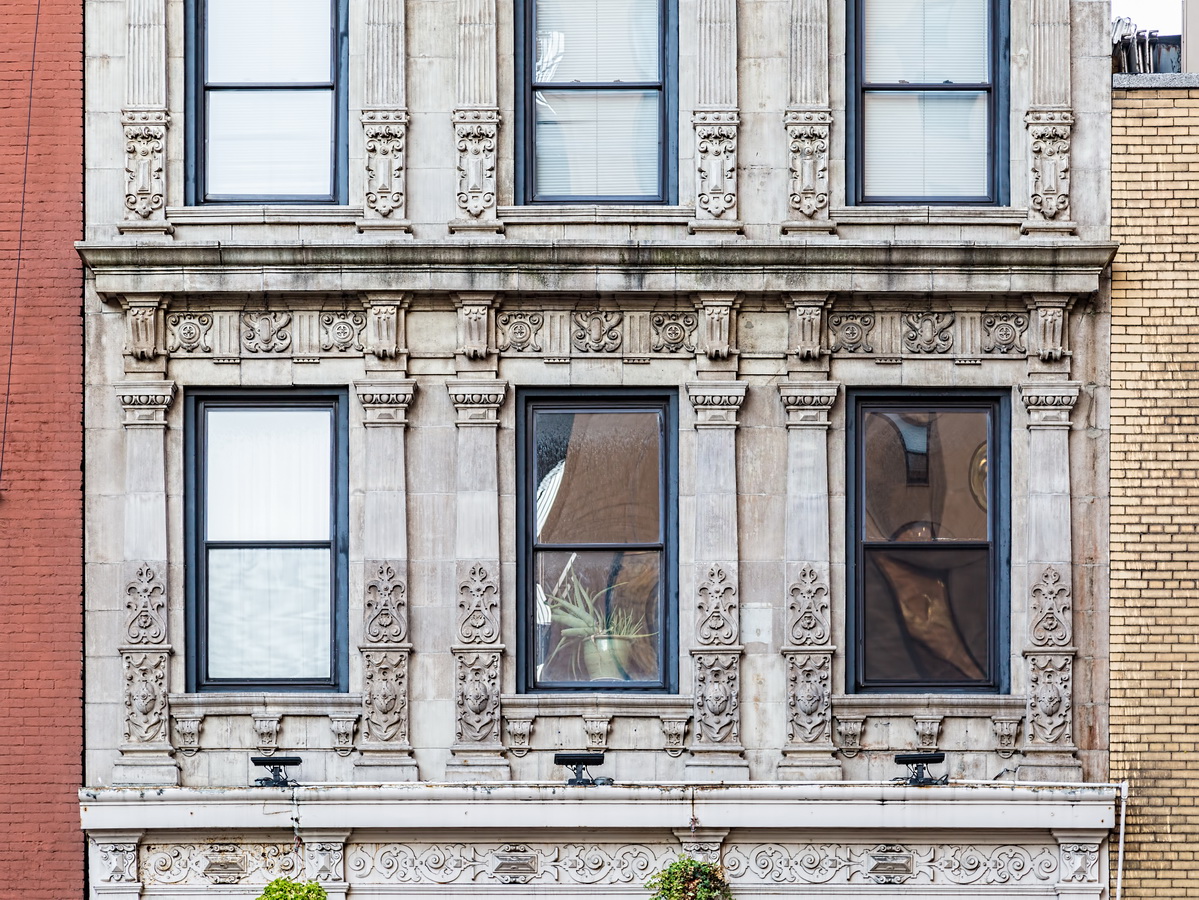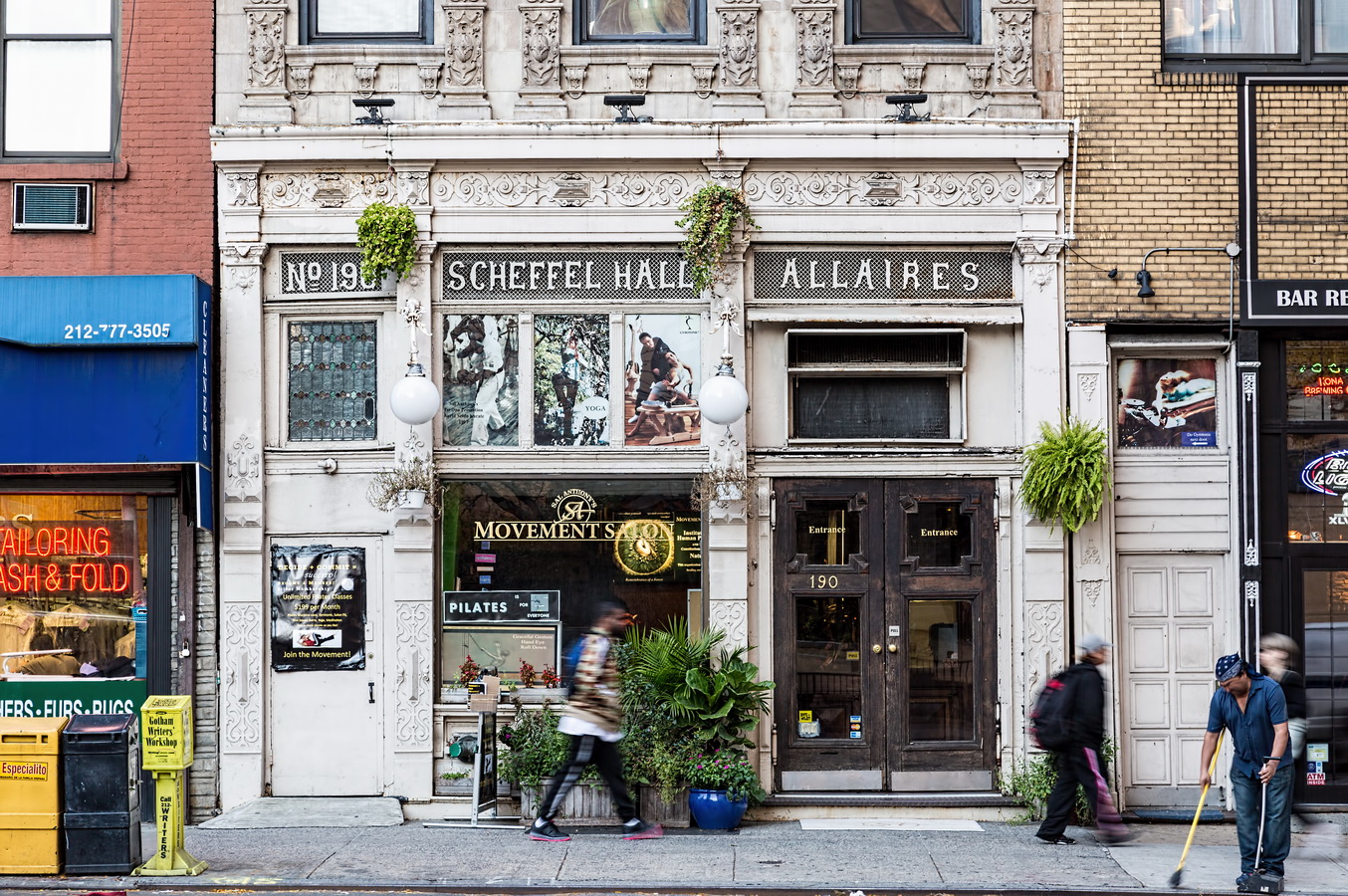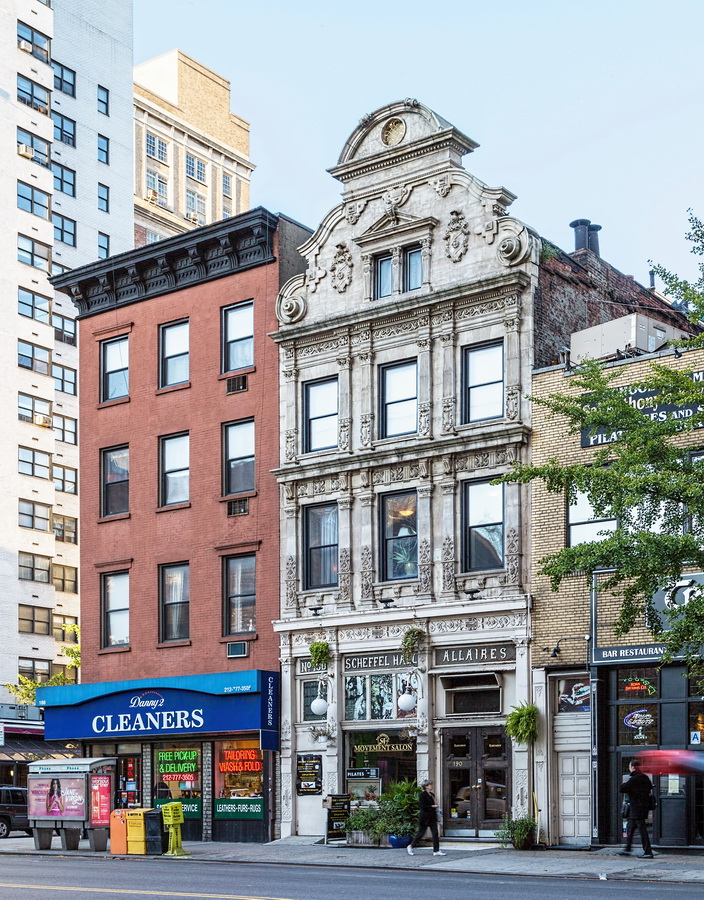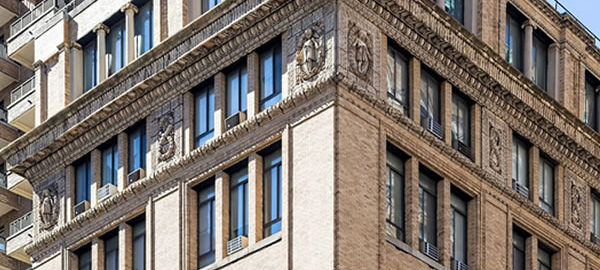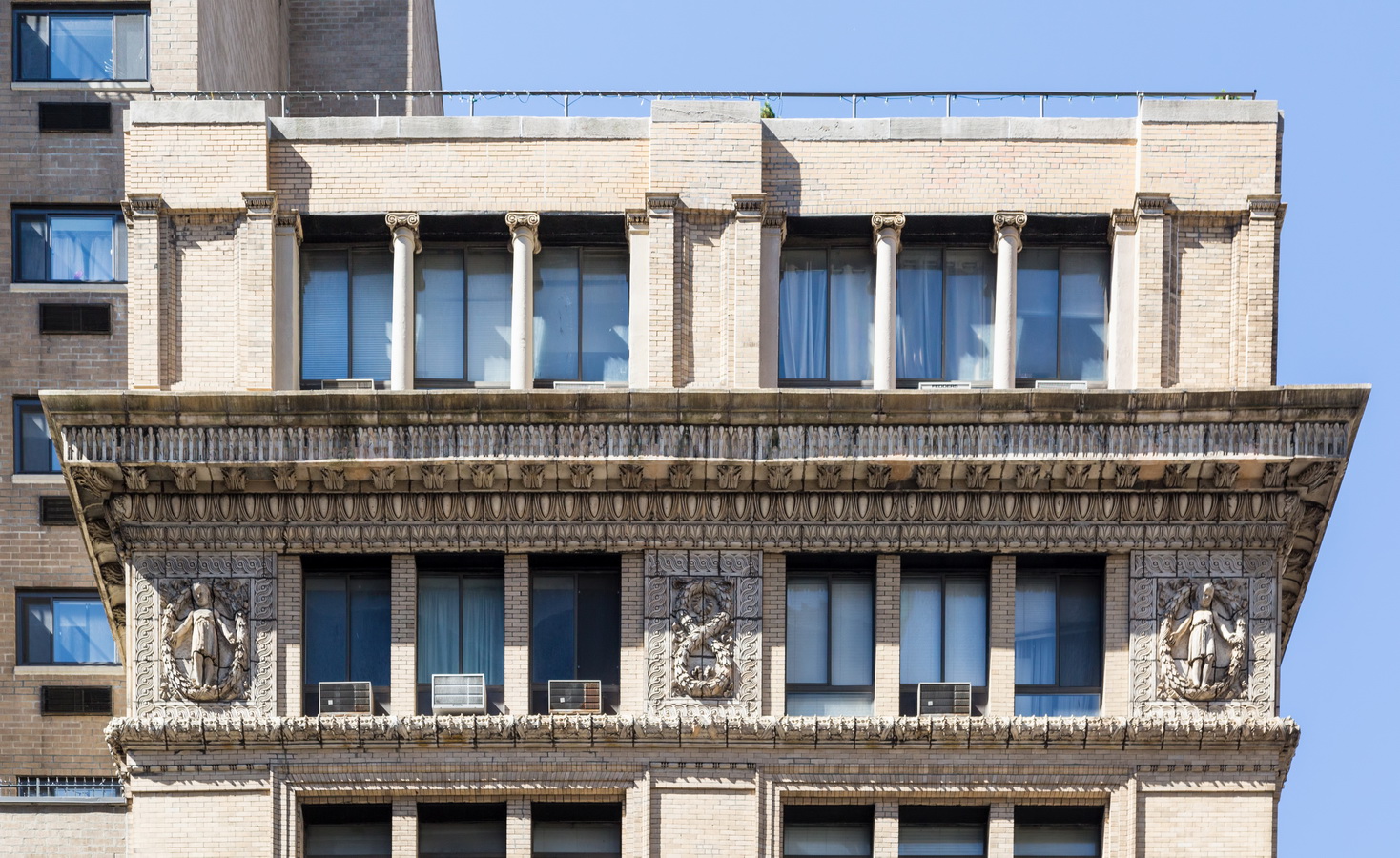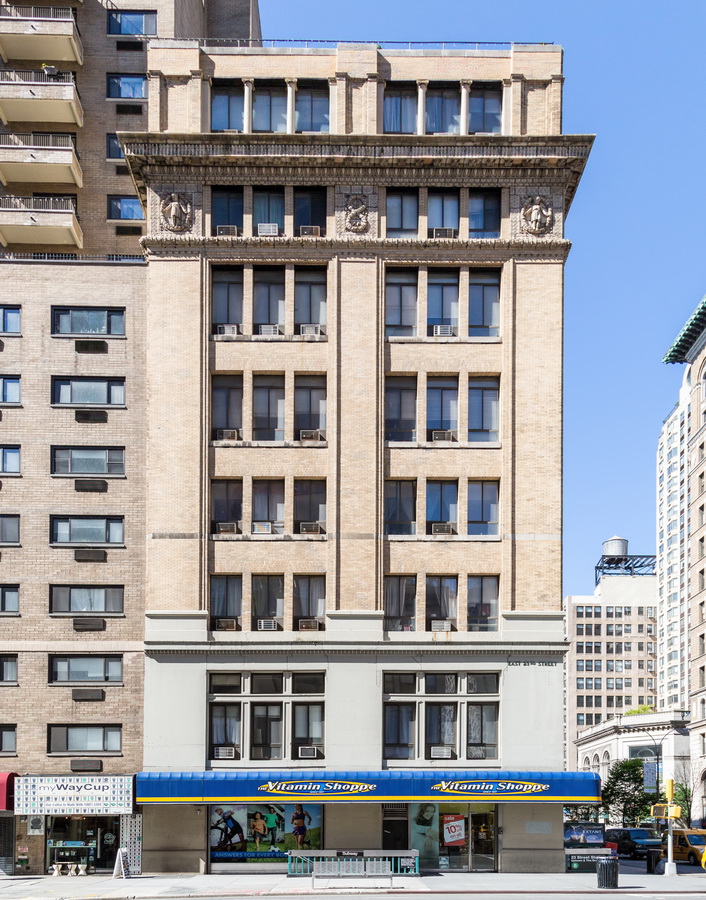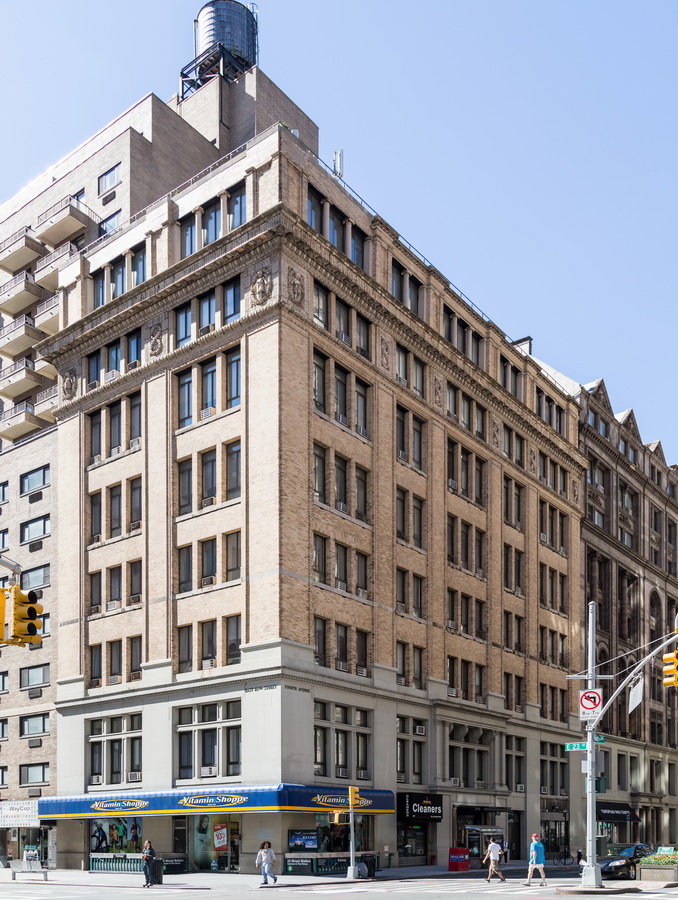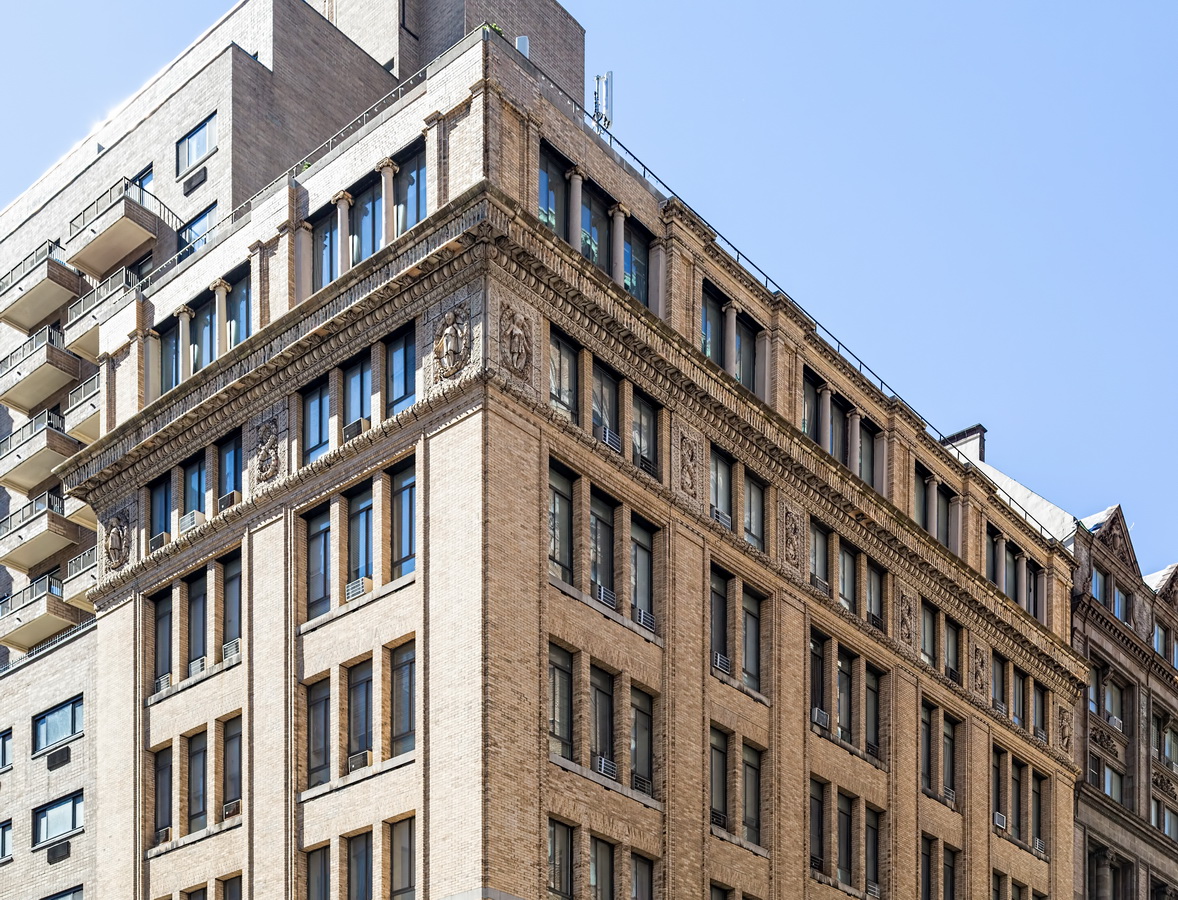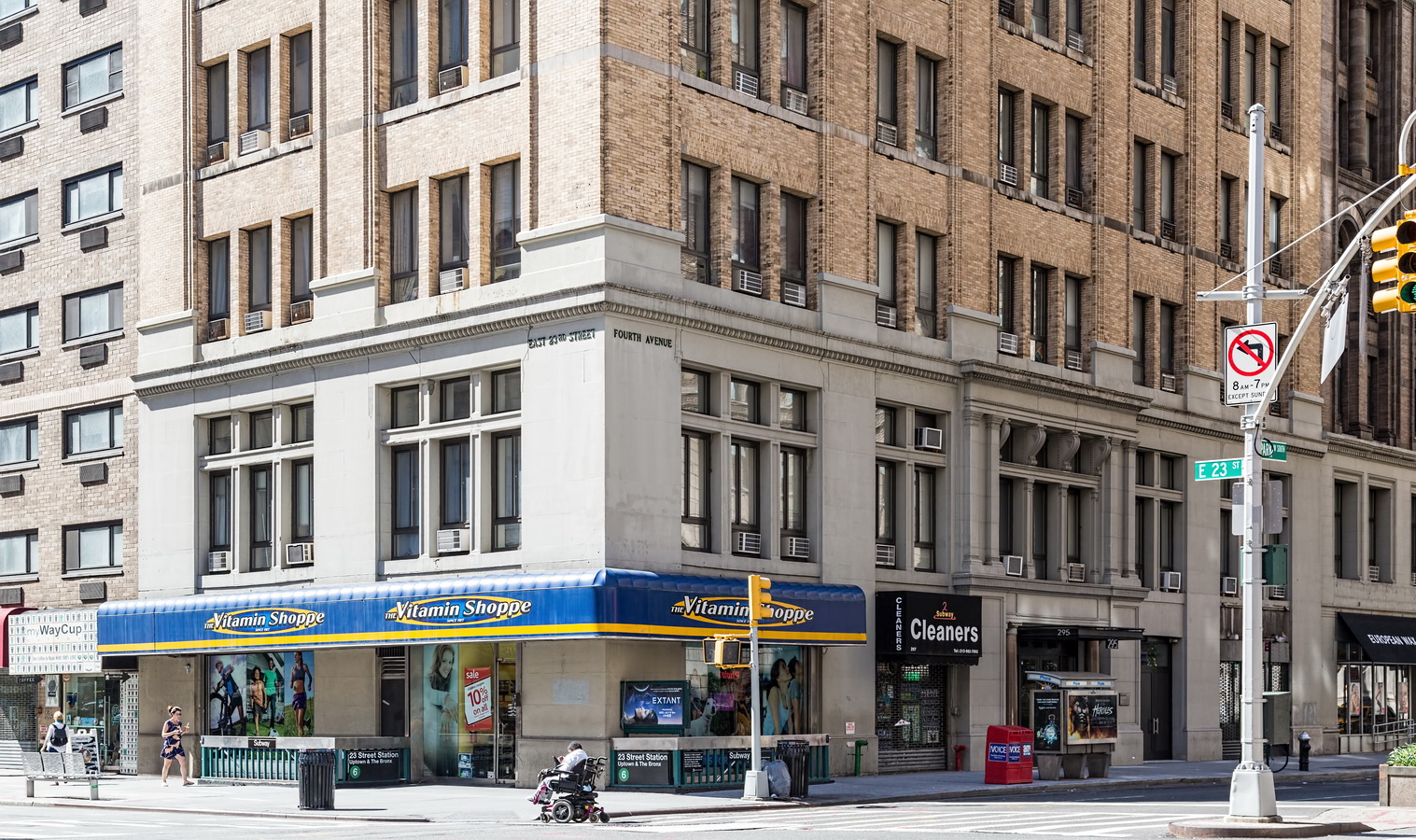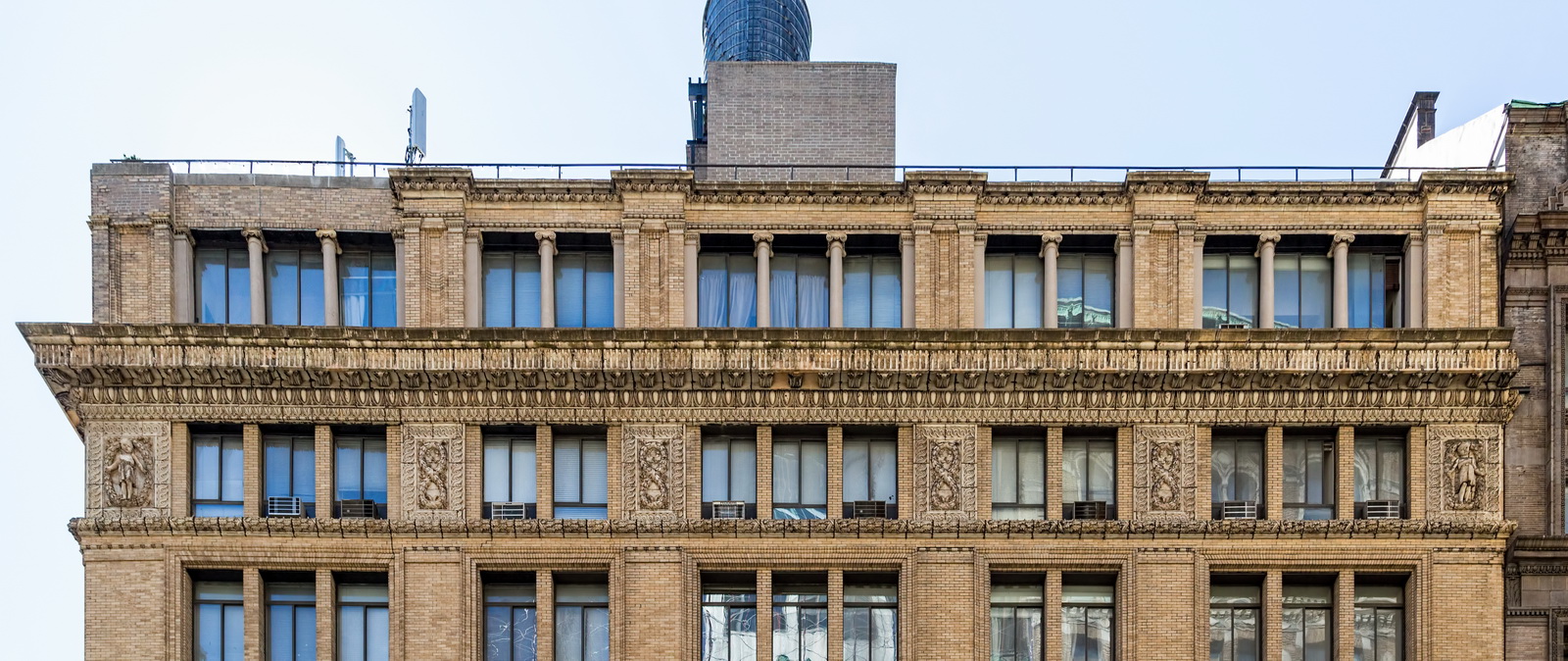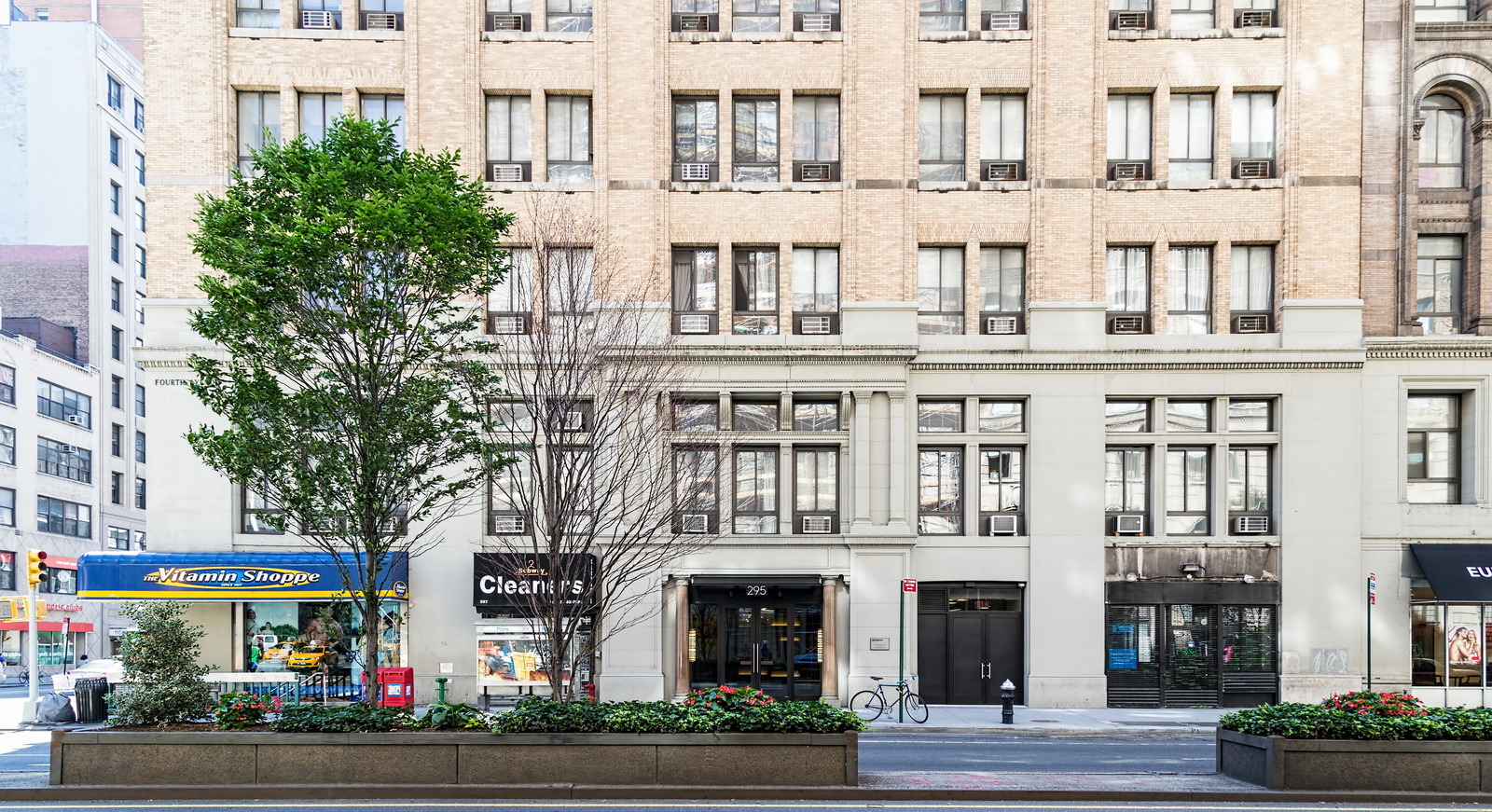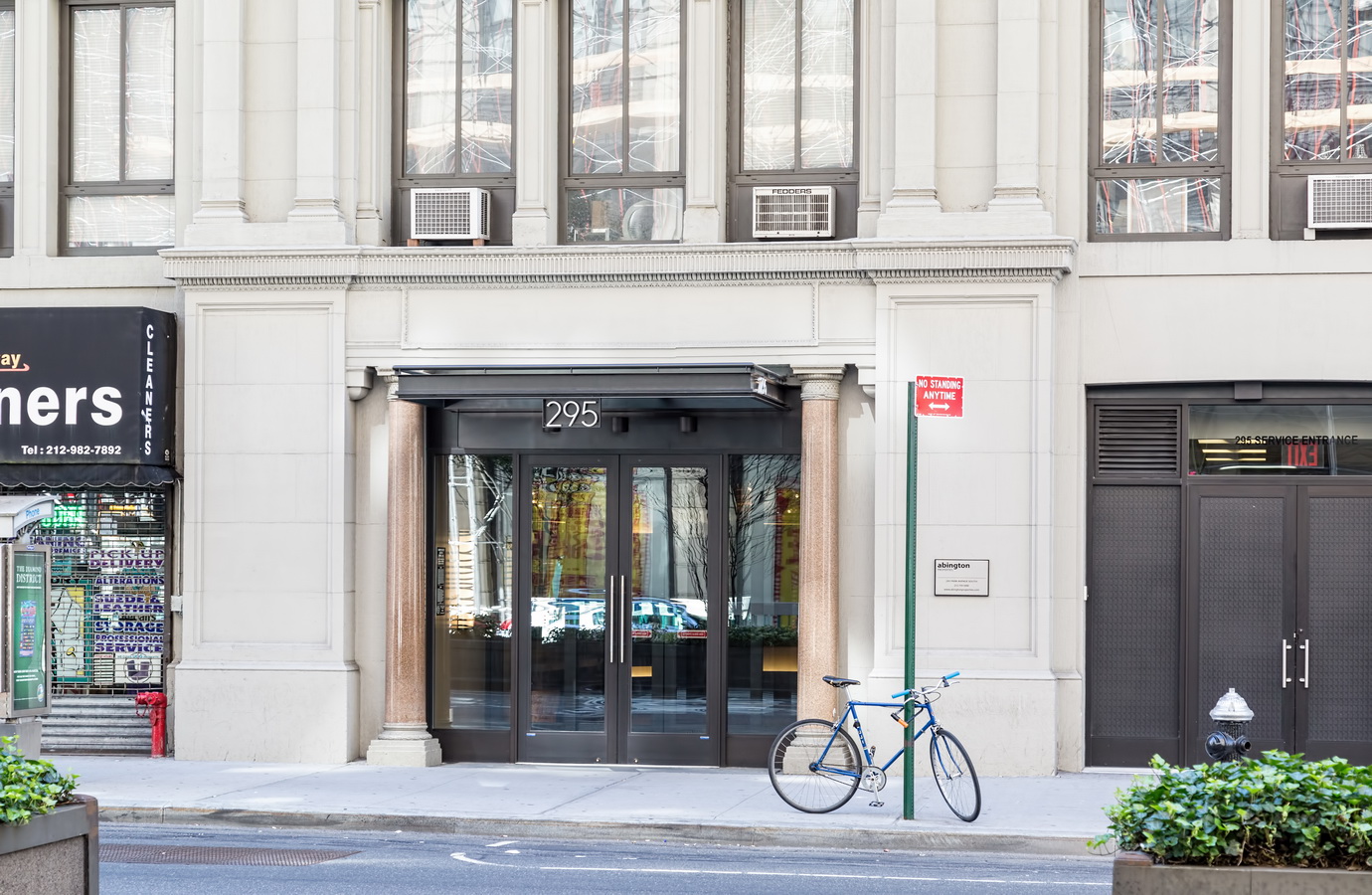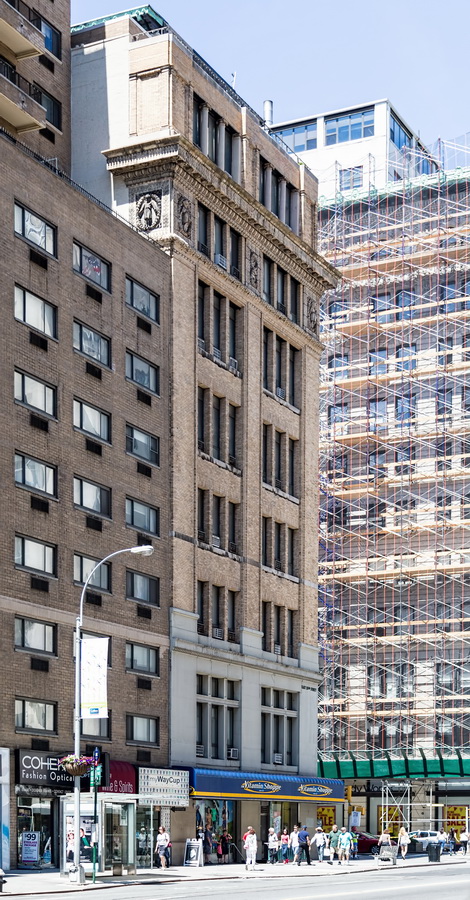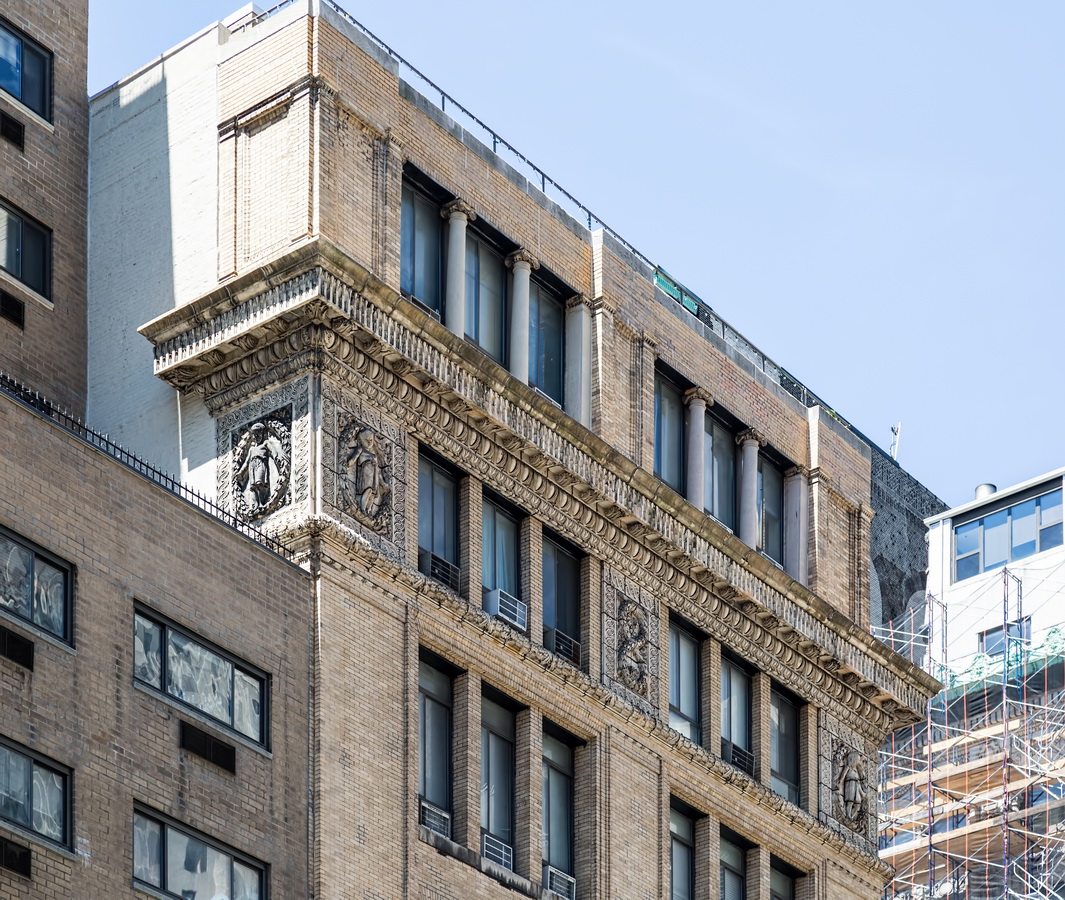Scheffel Hall, named for German poet Joseph Victor von Scheffel, recalls the days of Kleindeutschland (Little Germany), home of German immigrants on the Lower East Side.
Carl Goerwitz, a waiter who emigrated to New York in 1873, took over the lease on 190 Third Avenue in 1894. He hired the architectural firm of Weber & Drosser to remodel the building and join it to adjacent buildings that he already owned. The elaborate facade mimics Friedrichsbau at Heidelberg Castle. According to the NYC Landmarks Preservation Commission, the building is among the earliest surviving examples of terra cotta cladding.
In 1904 Goerwitz subleased the building, and it was eventually bought by adjacent Allaire’s restaurant. In the early 1900s the establishment was popular with politicians and writers (including O. Henry).
In more recent years the building was home to jazz club Fat Tuesday’s. It is now a pilates studio.
Scheffel Hall Vital Statistics
- Location: 190 3rd Avenue
- Year completed: 1895
- Architect: Henry Adam Weber, Weber & Drosser
- Floors: 4
- Style: German Renaissance
- New York City Landmark: 1997
Scheffel Hall Recommended Reading
Google Map
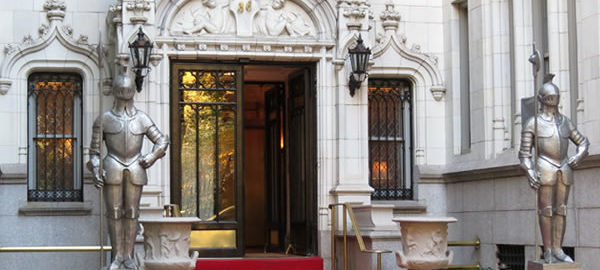
![IMG_9243 [11/20/2011 12:19:09 PM] IMG_9243 [11/20/2011 12:19:09 PM]](https://www.newyorkitecture.com/wp-content/gallery/gramercy-park-vicinity/img_9243.jpg)
![IMG_9181 [11/20/2011 12:01:45 PM] IMG_9181 [11/20/2011 12:01:45 PM]](https://www.newyorkitecture.com/wp-content/gallery/gramercy-park-vicinity/img_9181.jpg)
![IMG_9186 [11/20/2011 12:03:25 PM] IMG_9186 [11/20/2011 12:03:25 PM]](https://www.newyorkitecture.com/wp-content/gallery/gramercy-park-vicinity/img_9186.jpg)
![IMG_9189 [11/20/2011 12:04:40 PM] IMG_9189 [11/20/2011 12:04:40 PM]](https://www.newyorkitecture.com/wp-content/gallery/gramercy-park-vicinity/img_9189.jpg)
![IMG_9192 [11/20/2011 12:05:36 PM] IMG_9192 [11/20/2011 12:05:36 PM]](https://www.newyorkitecture.com/wp-content/gallery/gramercy-park-vicinity/img_9192.jpg)
![IMG_9207 [11/20/2011 12:09:01 PM] IMG_9207 [11/20/2011 12:09:01 PM]](https://www.newyorkitecture.com/wp-content/gallery/gramercy-park-vicinity/img_9207.jpg)
![IMG_9211 [11/20/2011 12:09:30 PM] IMG_9211 [11/20/2011 12:09:30 PM]](https://www.newyorkitecture.com/wp-content/gallery/gramercy-park-vicinity/img_9211.jpg)
![IMG_9213 [11/20/2011 12:10:32 PM] IMG_9213 [11/20/2011 12:10:32 PM]](https://www.newyorkitecture.com/wp-content/gallery/gramercy-park-vicinity/img_9213.jpg)
![IMG_9219 [11/20/2011 12:11:40 PM] IMG_9219 [11/20/2011 12:11:40 PM]](https://www.newyorkitecture.com/wp-content/gallery/gramercy-park-vicinity/img_9219.jpg)
![IMG_9177 [11/20/2011 12:00:57 PM] IMG_9177 [11/20/2011 12:00:57 PM]](https://www.newyorkitecture.com/wp-content/gallery/gramercy-park-vicinity/img_9177.jpg)
![IMG_9246 [11/20/2011 12:19:54 PM] IMG_9246 [11/20/2011 12:19:54 PM]](https://www.newyorkitecture.com/wp-content/gallery/gramercy-park-vicinity/img_9246.jpg)
![IMG_9249 [11/20/2011 12:21:16 PM] IMG_9249 [11/20/2011 12:21:16 PM]](https://www.newyorkitecture.com/wp-content/gallery/gramercy-park-vicinity/img_9249.jpg)
![IMG_9255 [11/20/2011 12:22:15 PM] IMG_9255 [11/20/2011 12:22:15 PM]](https://www.newyorkitecture.com/wp-content/gallery/gramercy-park-vicinity/img_9255.jpg)
![IMG_9267 [11/20/2011 12:29:21 PM] IMG_9267 [11/20/2011 12:29:21 PM]](https://www.newyorkitecture.com/wp-content/gallery/gramercy-park-vicinity/img_9267.jpg)
![IMG_9273 [11/20/2011 12:30:50 PM] IMG_9273 [11/20/2011 12:30:50 PM]](https://www.newyorkitecture.com/wp-content/gallery/gramercy-park-vicinity/img_9273.jpg)
![IMG_9276 [11/20/2011 12:32:03 PM] IMG_9276 [11/20/2011 12:32:03 PM]](https://www.newyorkitecture.com/wp-content/gallery/gramercy-park-vicinity/img_9276.jpg)
![IMG_9279 [11/20/2011 12:34:30 PM] IMG_9279 [11/20/2011 12:34:30 PM]](https://www.newyorkitecture.com/wp-content/gallery/gramercy-park-vicinity/img_9279.jpg)
![IMG_9300 [11/20/2011 12:40:31 PM] IMG_9300 [11/20/2011 12:40:31 PM]](https://www.newyorkitecture.com/wp-content/gallery/gramercy-park-vicinity/img_9300.jpg)
![IMG_9108 [11/20/2011 11:34:31 AM] IMG_9108 [11/20/2011 11:34:31 AM]](https://www.newyorkitecture.com/wp-content/gallery/gramercy-park-vicinity/img_9108.jpg)
![IMG_9066 [11/20/2011 11:23:50 AM] IMG_9066 [11/20/2011 11:23:50 AM]](https://www.newyorkitecture.com/wp-content/gallery/gramercy-park-vicinity/img_9066.jpg)
![IMG_9072 [11/20/2011 11:25:08 AM] IMG_9072 [11/20/2011 11:25:08 AM]](https://www.newyorkitecture.com/wp-content/gallery/gramercy-park-vicinity/img_9072.jpg)
![IMG_9075 [11/20/2011 11:26:55 AM] IMG_9075 [11/20/2011 11:26:55 AM]](https://www.newyorkitecture.com/wp-content/gallery/gramercy-park-vicinity/img_9075.jpg)
![IMG_9087 [11/20/2011 11:30:46 AM] IMG_9087 [11/20/2011 11:30:46 AM]](https://www.newyorkitecture.com/wp-content/gallery/gramercy-park-vicinity/img_9087.jpg)
![IMG_9090 [11/20/2011 11:31:05 AM] IMG_9090 [11/20/2011 11:31:05 AM]](https://www.newyorkitecture.com/wp-content/gallery/gramercy-park-vicinity/img_9090.jpg)
![IMG_9096 [11/20/2011 11:32:24 AM] IMG_9096 [11/20/2011 11:32:24 AM]](https://www.newyorkitecture.com/wp-content/gallery/gramercy-park-vicinity/img_9096.jpg)
![IMG_9101 [11/20/2011 11:32:54 AM] IMG_9101 [11/20/2011 11:32:54 AM]](https://www.newyorkitecture.com/wp-content/gallery/gramercy-park-vicinity/img_9101.jpg)
![IMG_9102 [11/20/2011 11:33:31 AM] IMG_9102 [11/20/2011 11:33:31 AM]](https://www.newyorkitecture.com/wp-content/gallery/gramercy-park-vicinity/img_9102.jpg)
![IMG_9042 [11/20/2011 11:17:40 AM] IMG_9042 [11/20/2011 11:17:40 AM]](https://www.newyorkitecture.com/wp-content/gallery/gramercy-park-vicinity/img_9042.jpg)
![IMG_9116 [11/20/2011 11:36:38 AM] IMG_9116 [11/20/2011 11:36:38 AM]](https://www.newyorkitecture.com/wp-content/gallery/gramercy-park-vicinity/img_9116.jpg)
![IMG_9117 [11/20/2011 11:37:18 AM] IMG_9117 [11/20/2011 11:37:18 AM]](https://www.newyorkitecture.com/wp-content/gallery/gramercy-park-vicinity/img_9117.jpg)
![IMG_9126 [11/20/2011 11:40:41 AM] IMG_9126 [11/20/2011 11:40:41 AM]](https://www.newyorkitecture.com/wp-content/gallery/gramercy-park-vicinity/img_9126.jpg)
![IMG_9132 [11/20/2011 11:42:27 AM] IMG_9132 [11/20/2011 11:42:27 AM]](https://www.newyorkitecture.com/wp-content/gallery/gramercy-park-vicinity/img_9132.jpg)
![IMG_9149 [11/20/2011 11:47:51 AM] IMG_9149 [11/20/2011 11:47:51 AM]](https://www.newyorkitecture.com/wp-content/gallery/gramercy-park-vicinity/img_9149.jpg)
![IMG_9153 [11/20/2011 11:49:25 AM] IMG_9153 [11/20/2011 11:49:25 AM]](https://www.newyorkitecture.com/wp-content/gallery/gramercy-park-vicinity/img_9153.jpg)
![IMG_9168 [11/20/2011 11:53:56 AM] IMG_9168 [11/20/2011 11:53:56 AM]](https://www.newyorkitecture.com/wp-content/gallery/gramercy-park-vicinity/img_9168.jpg)
